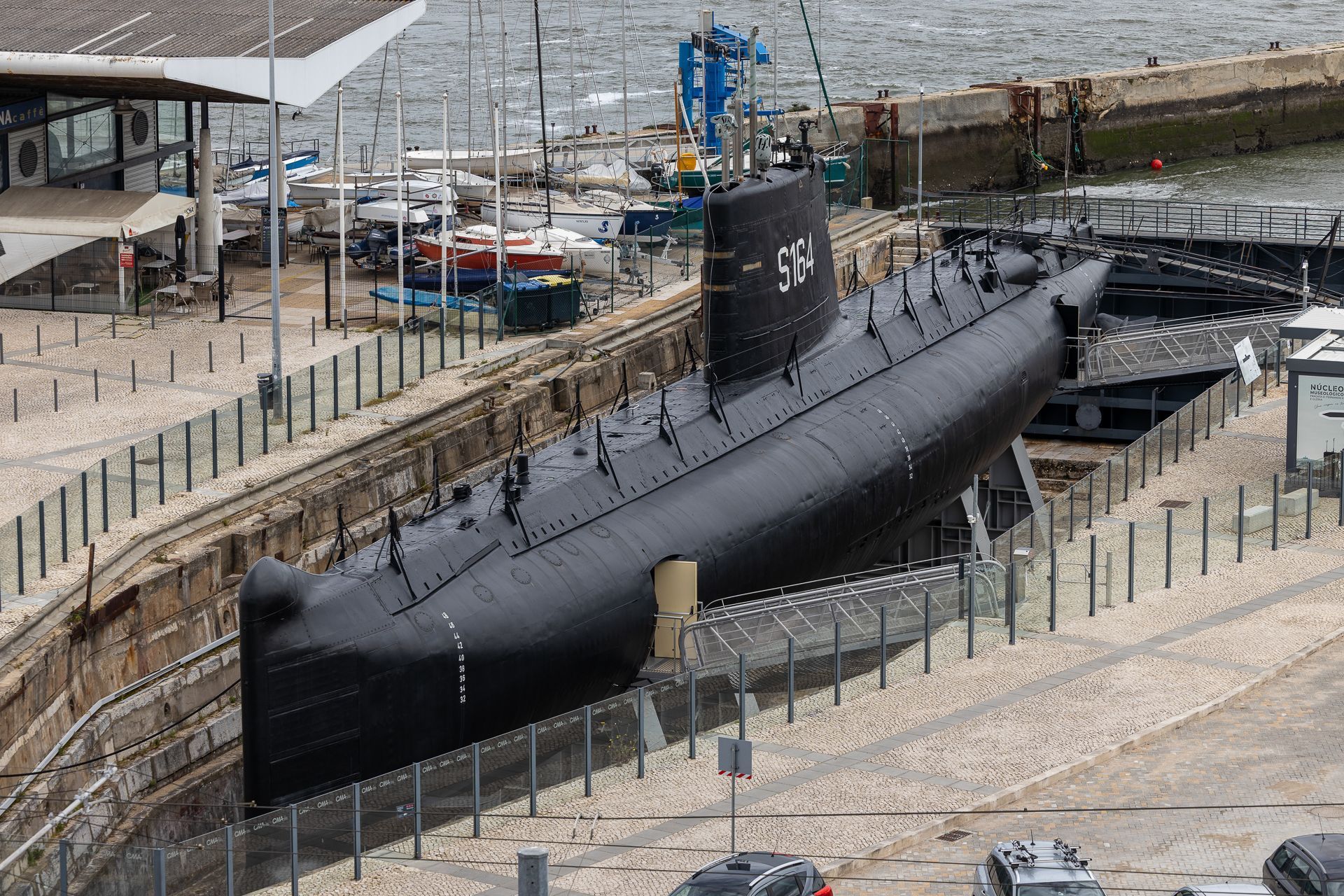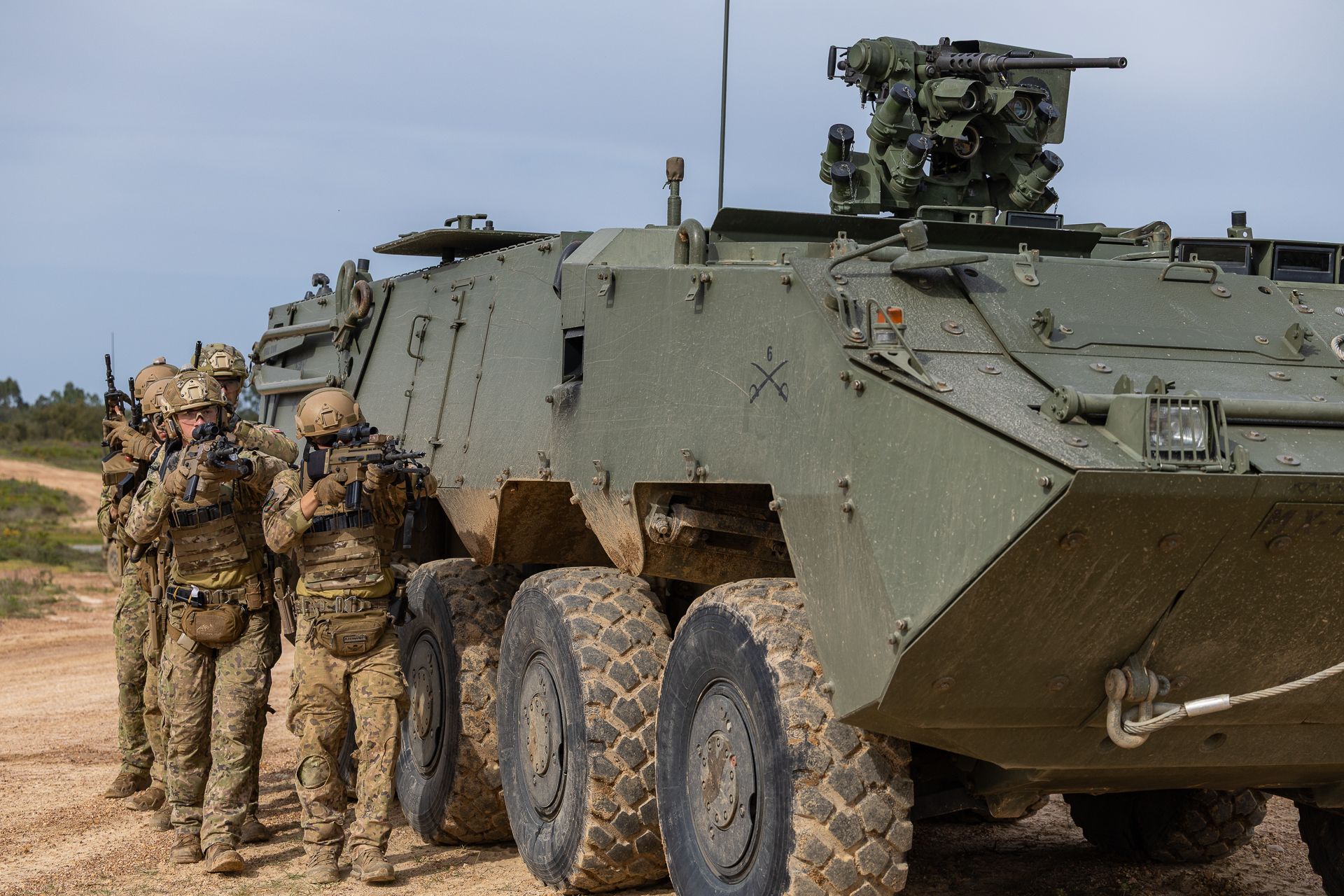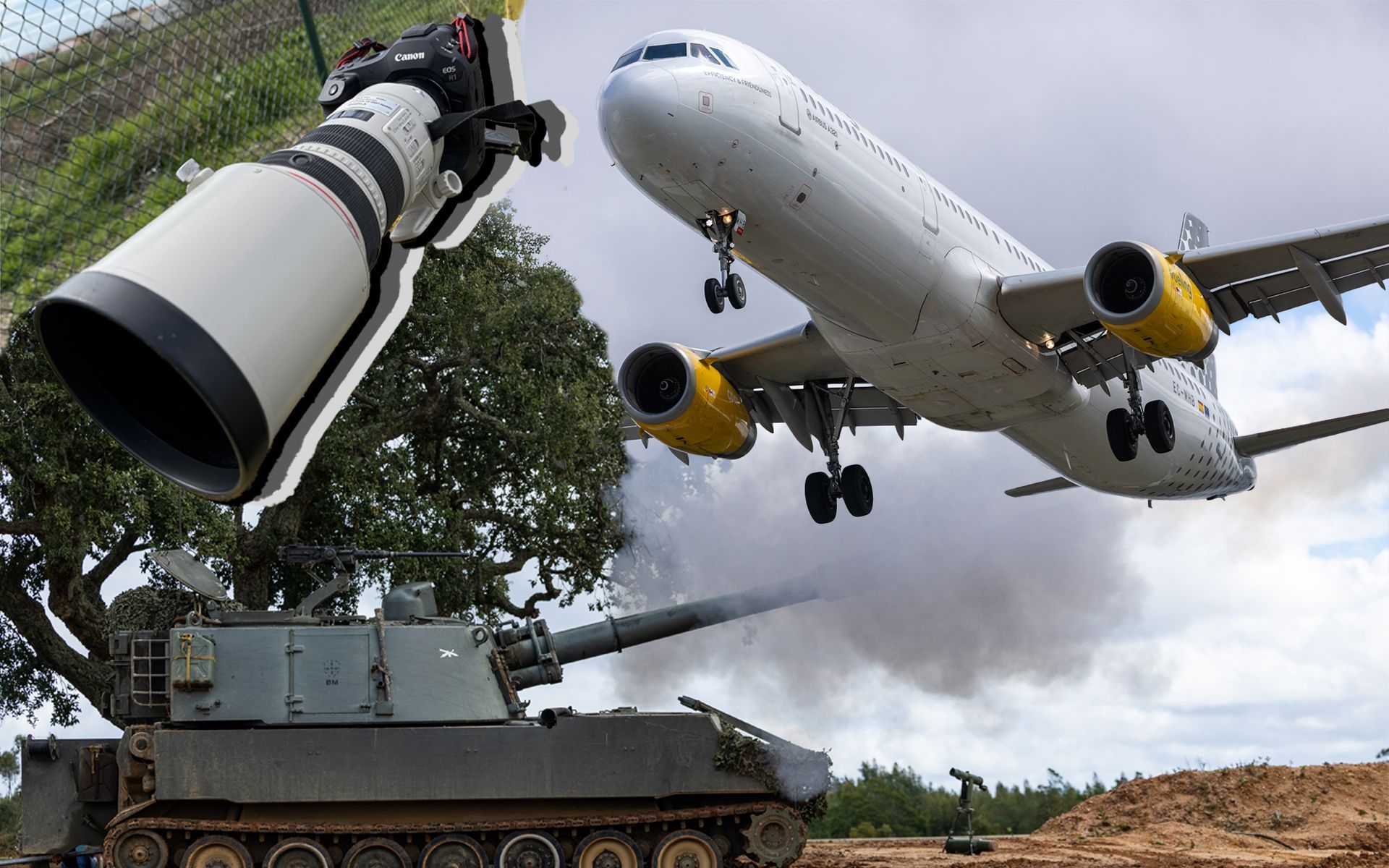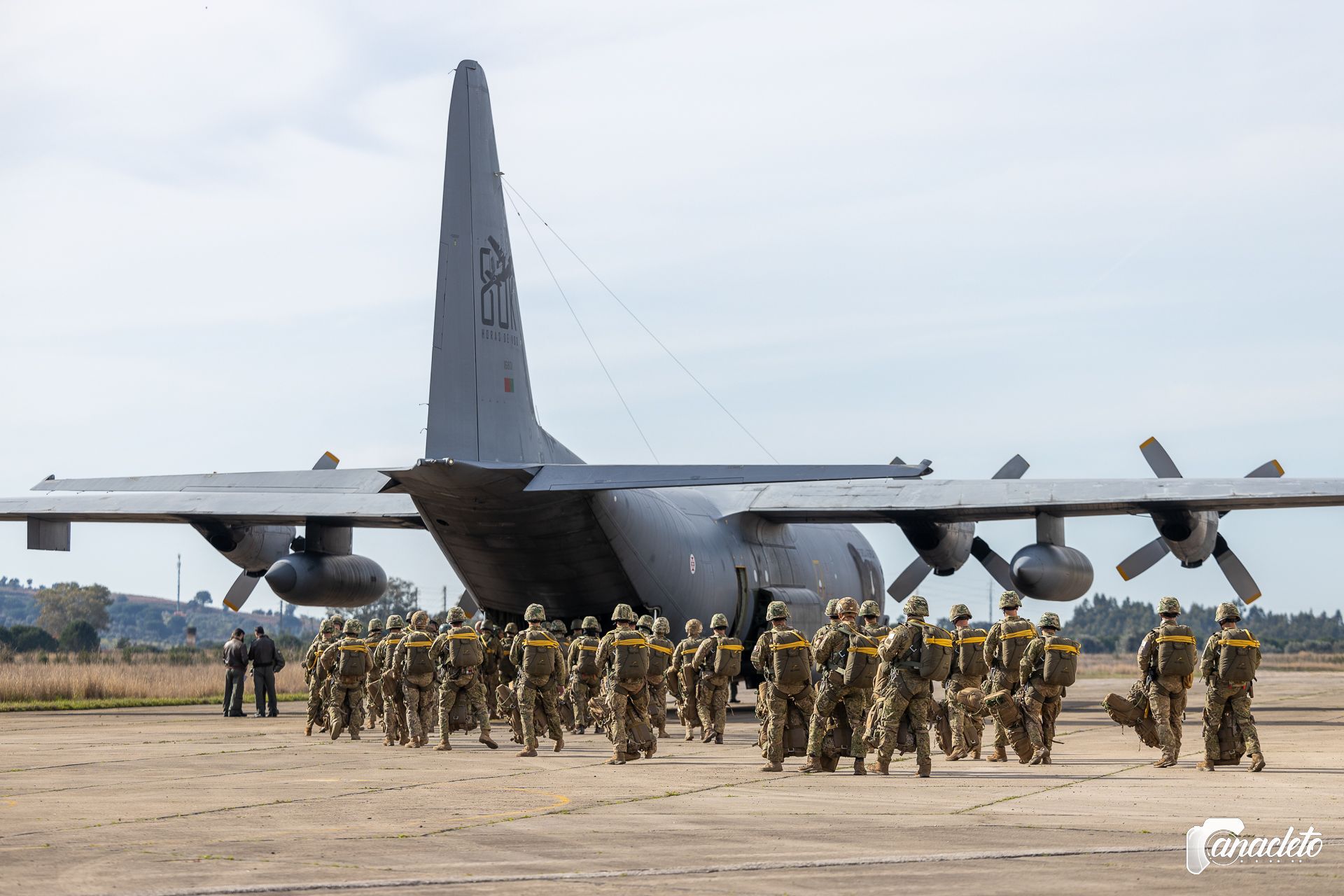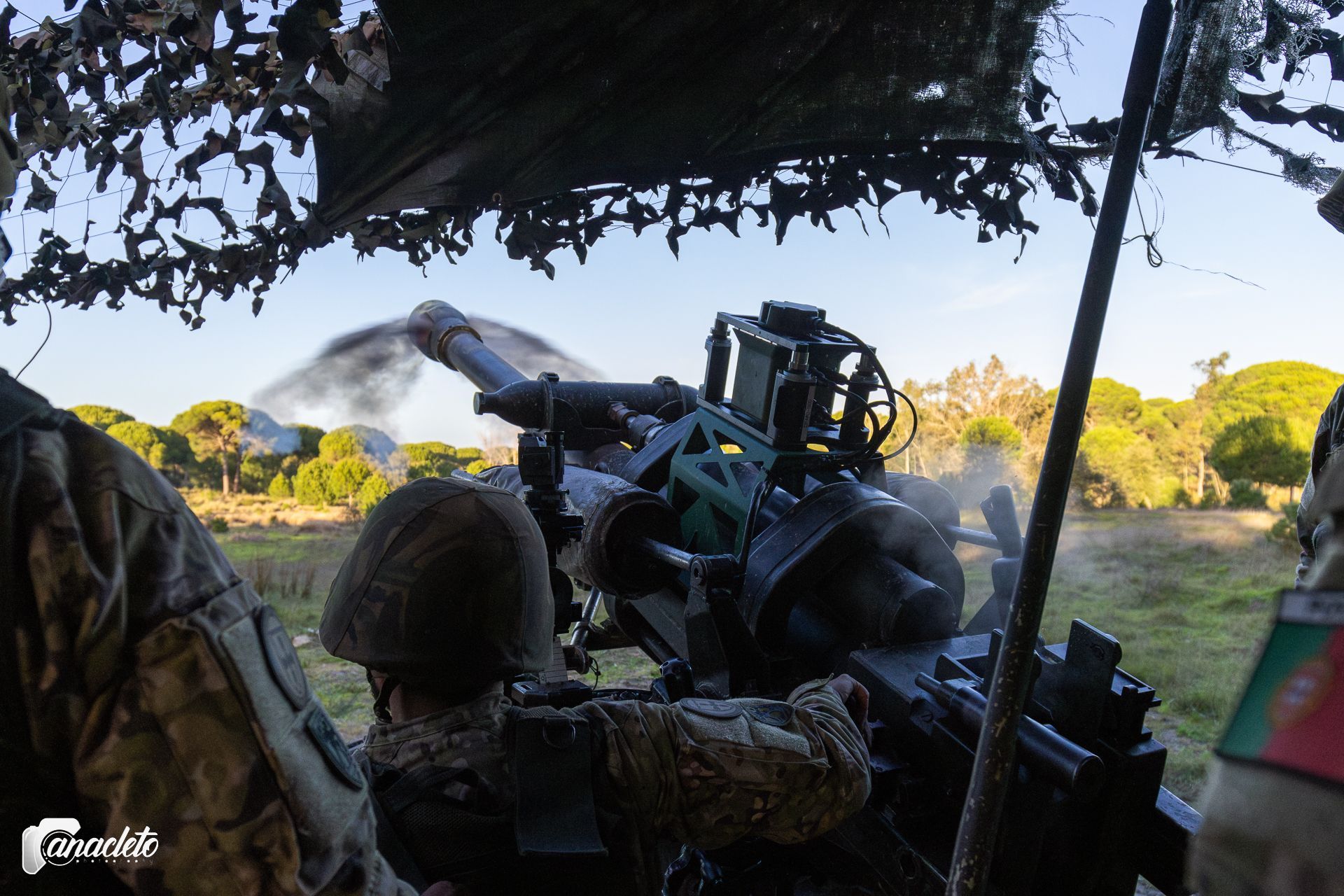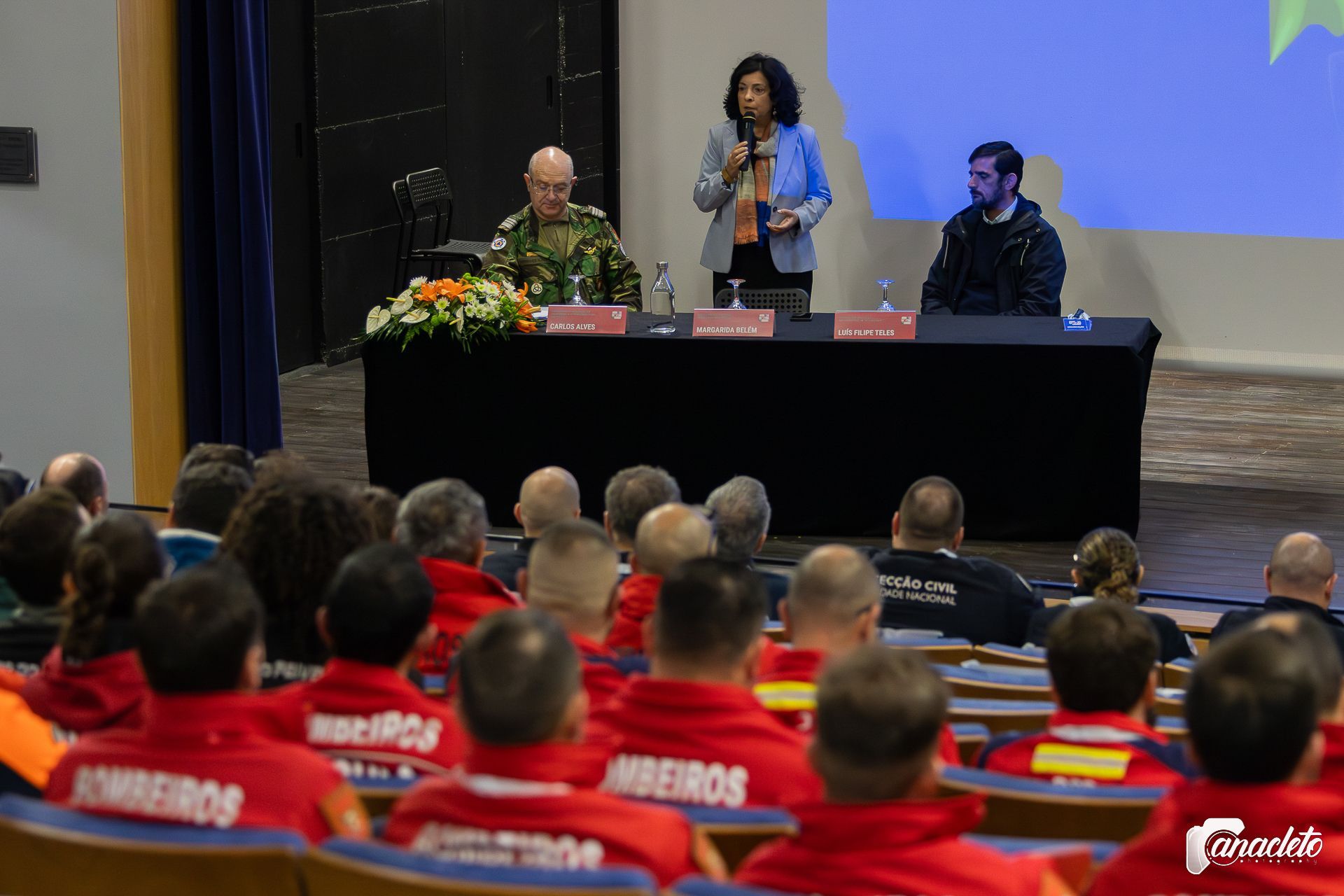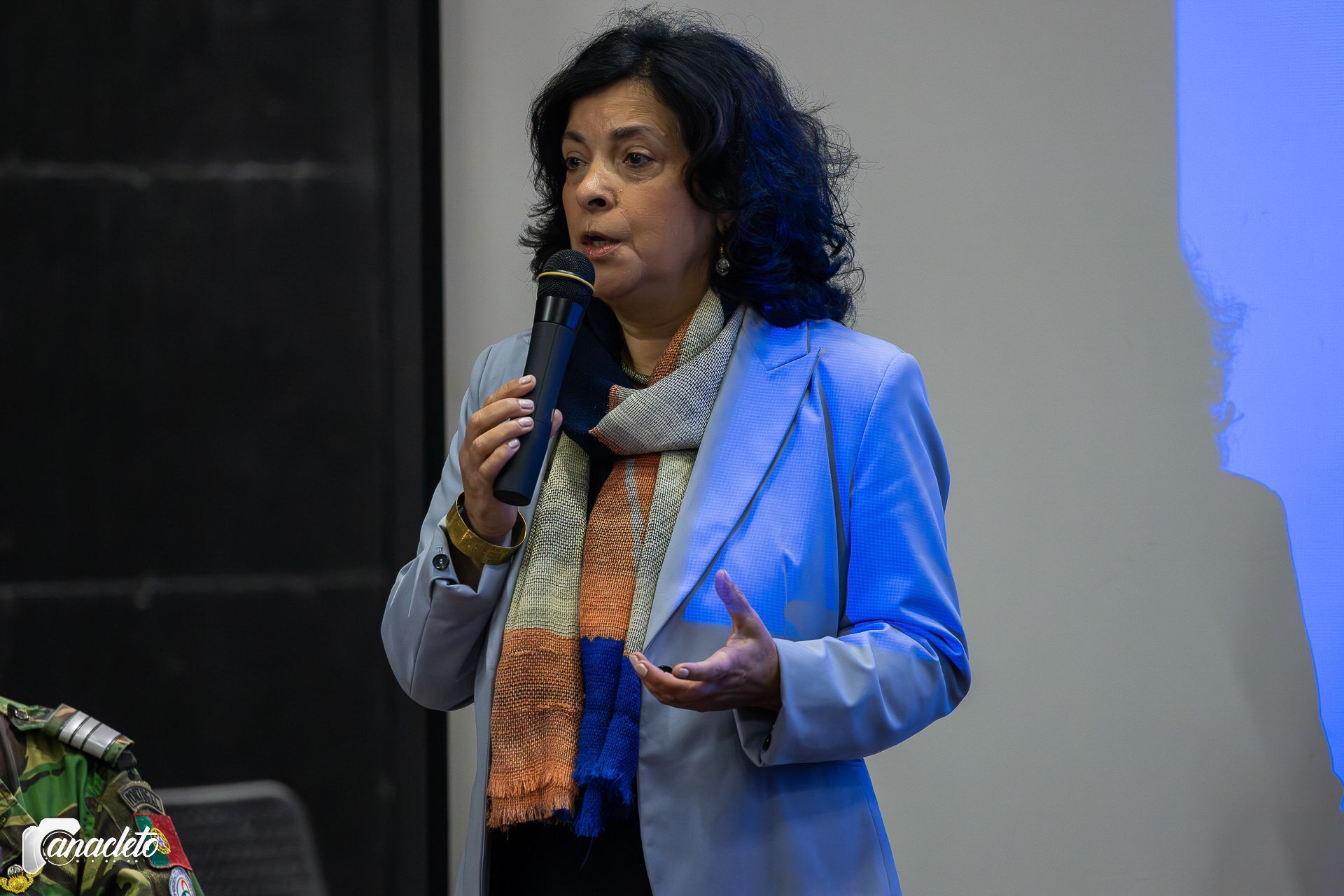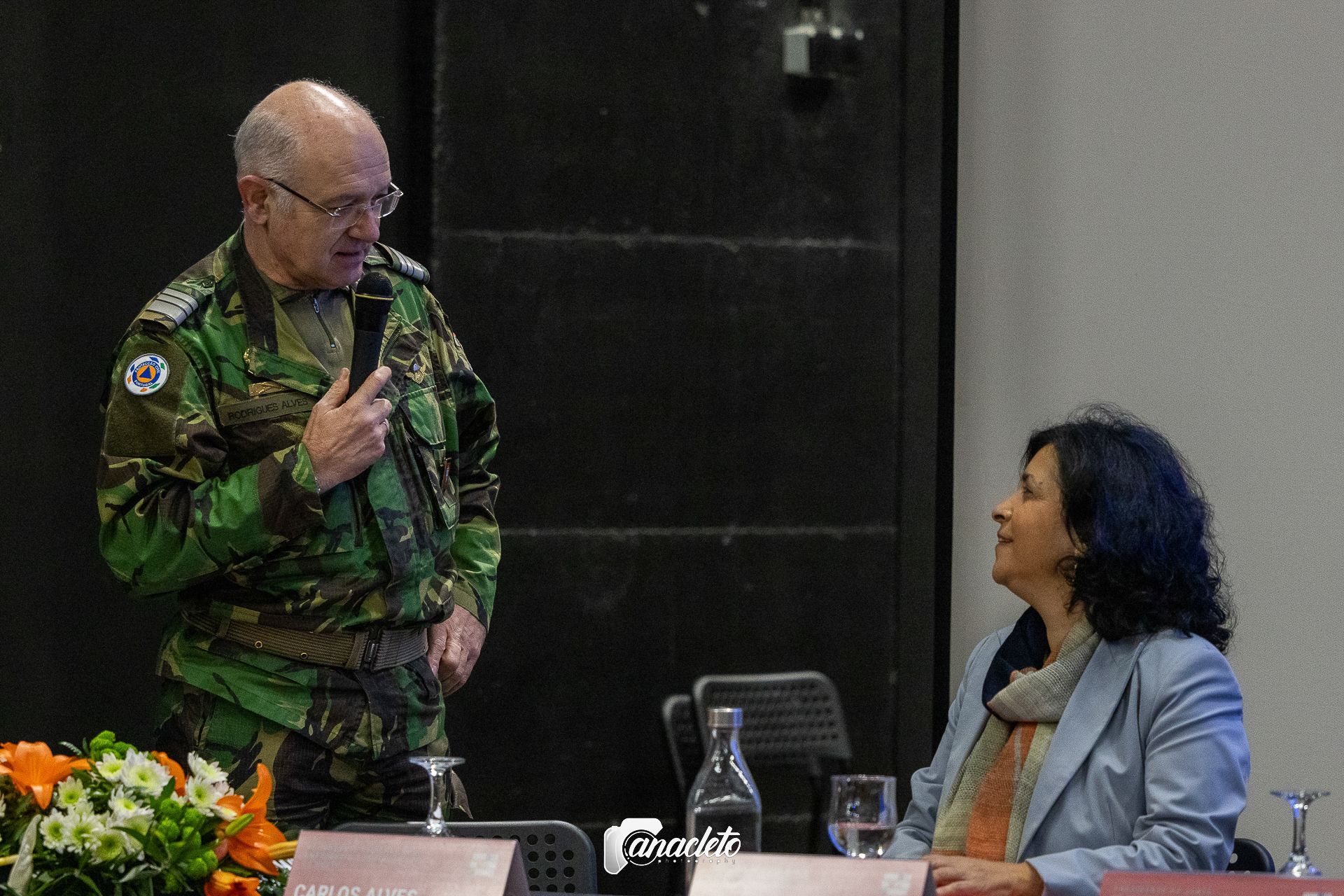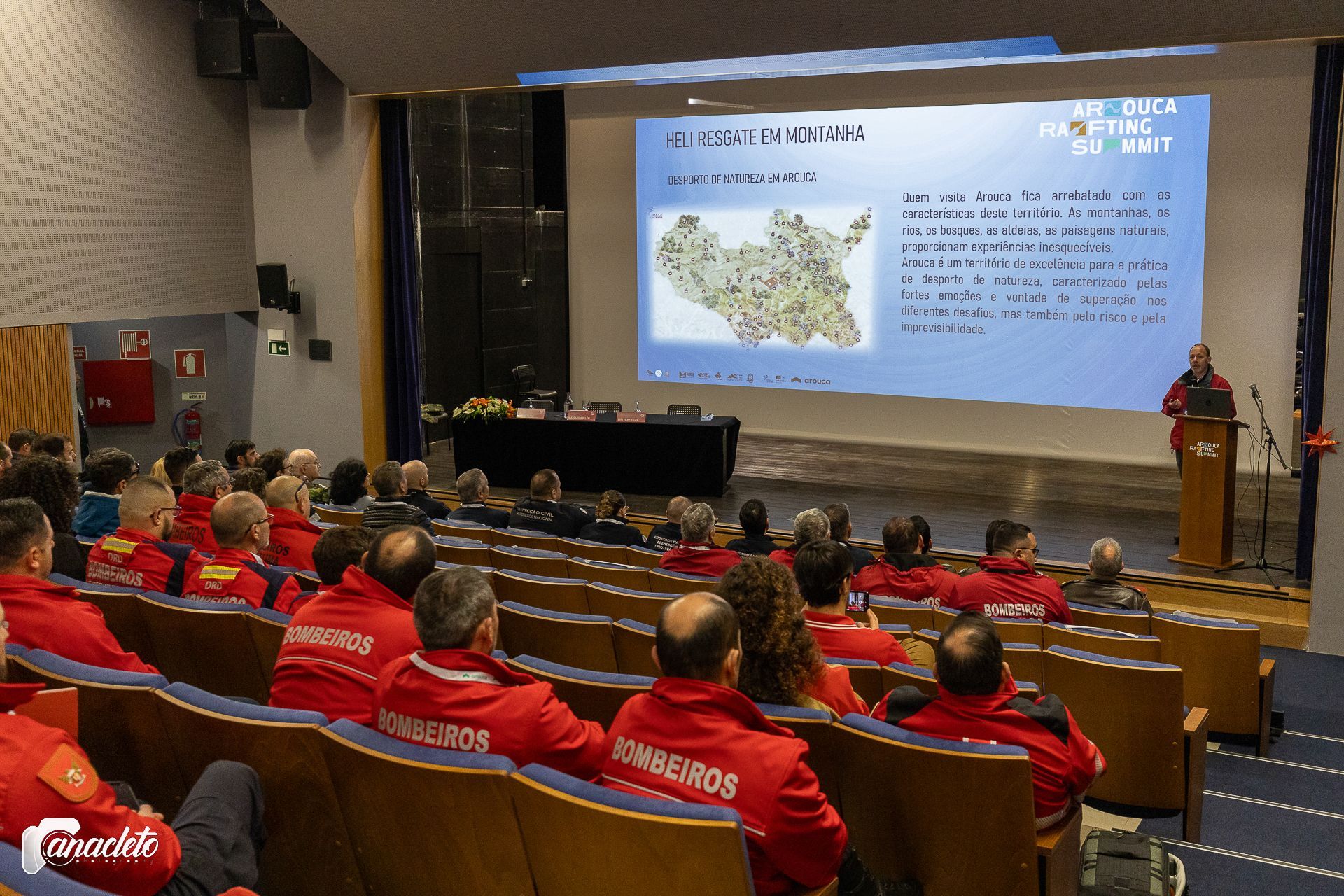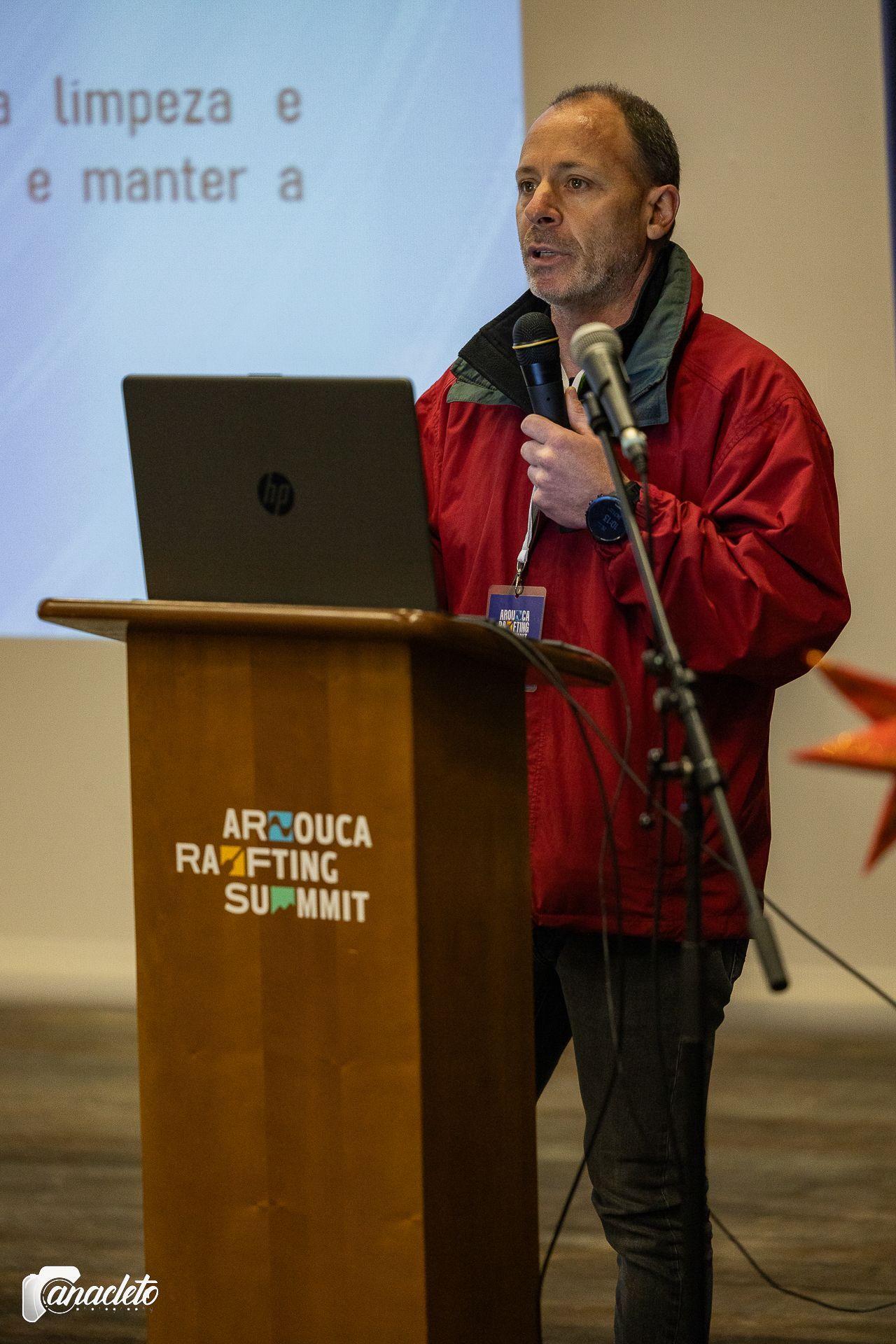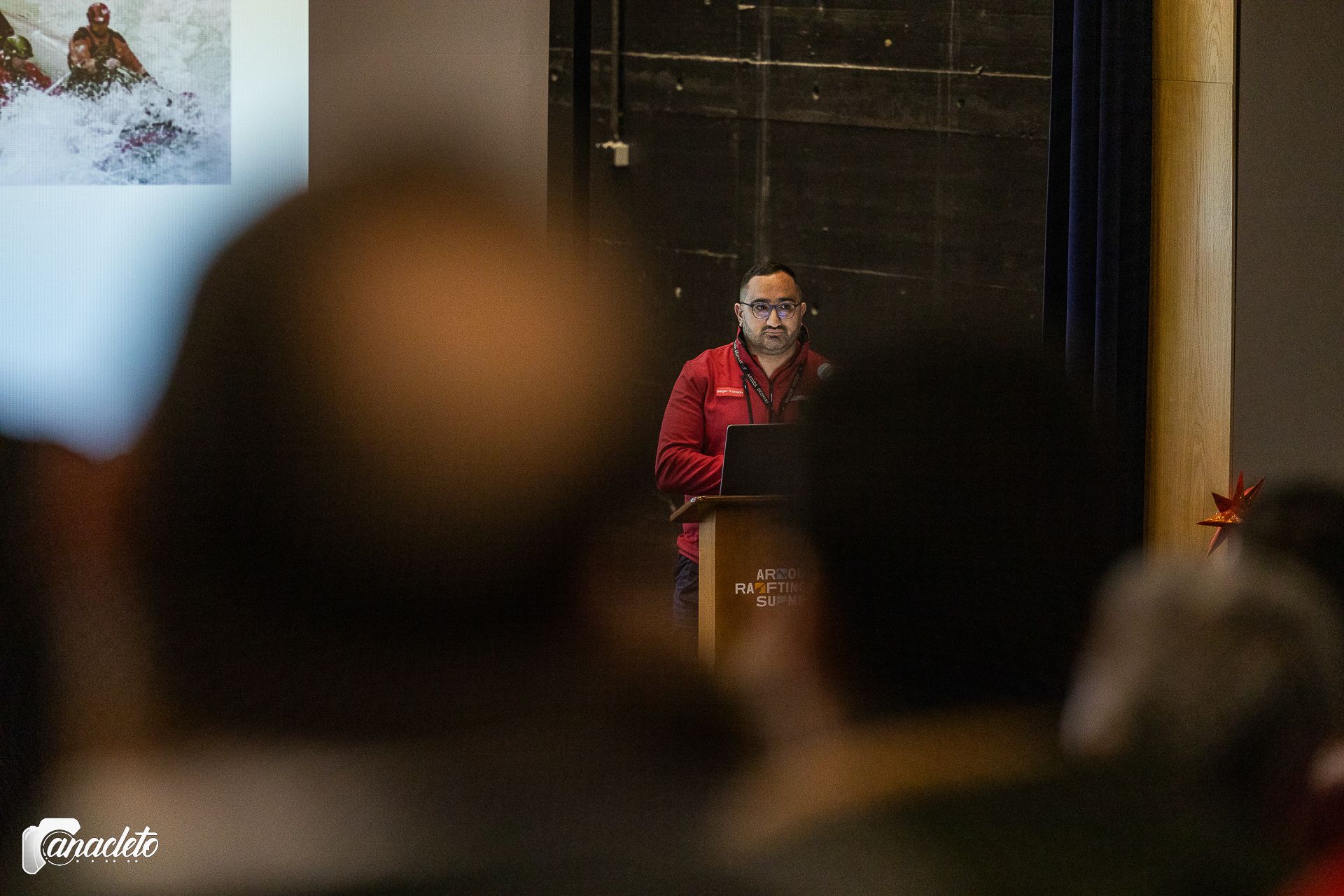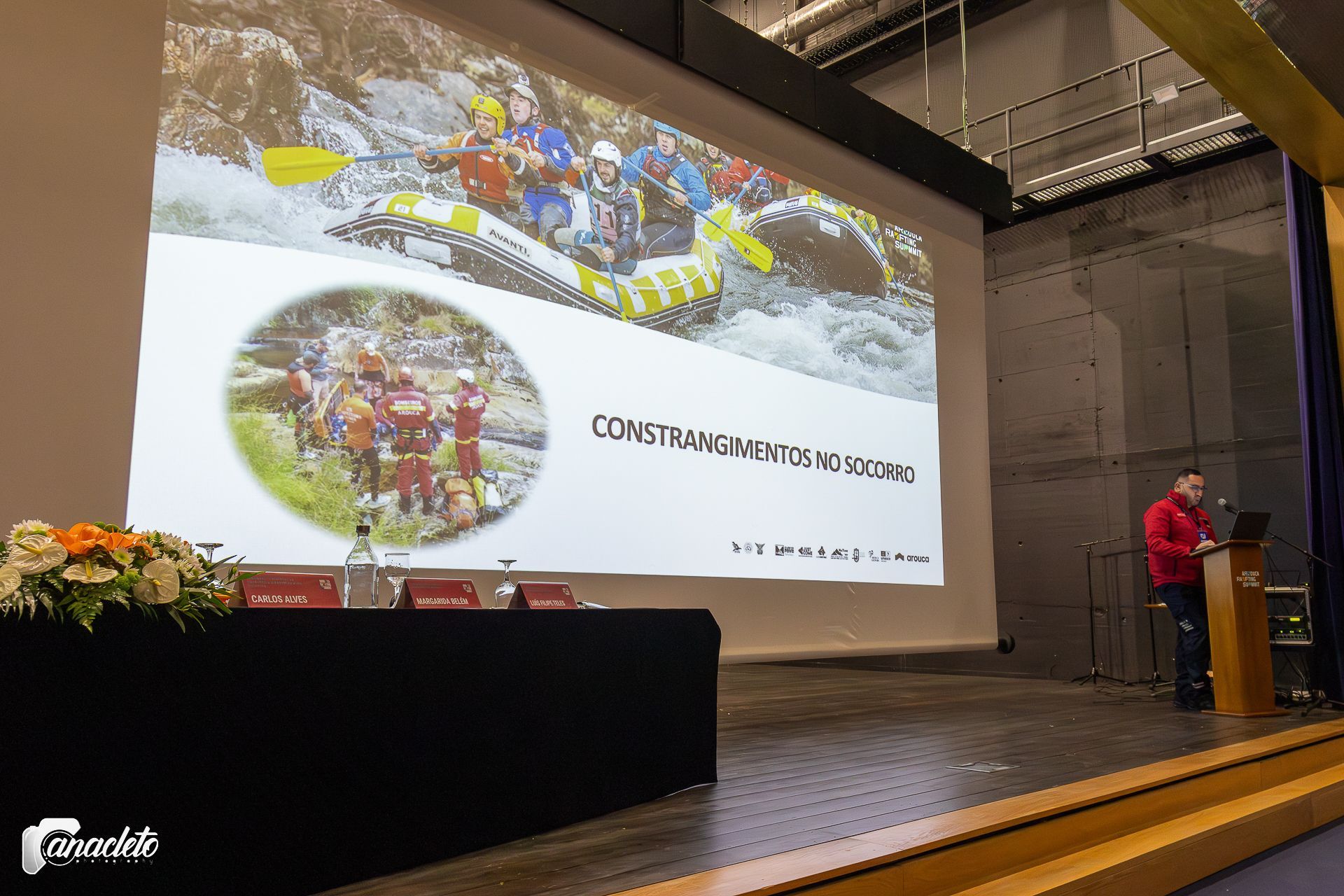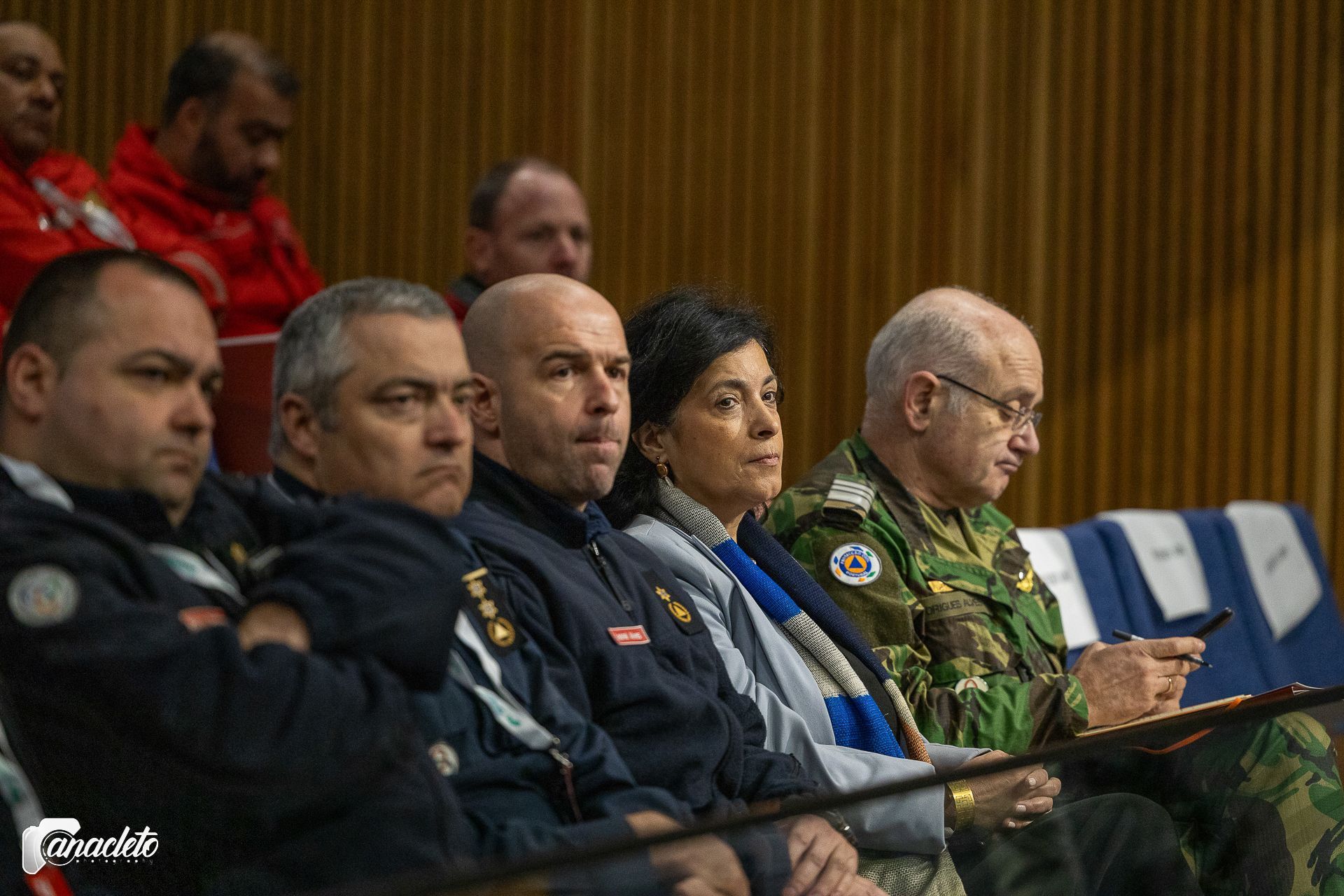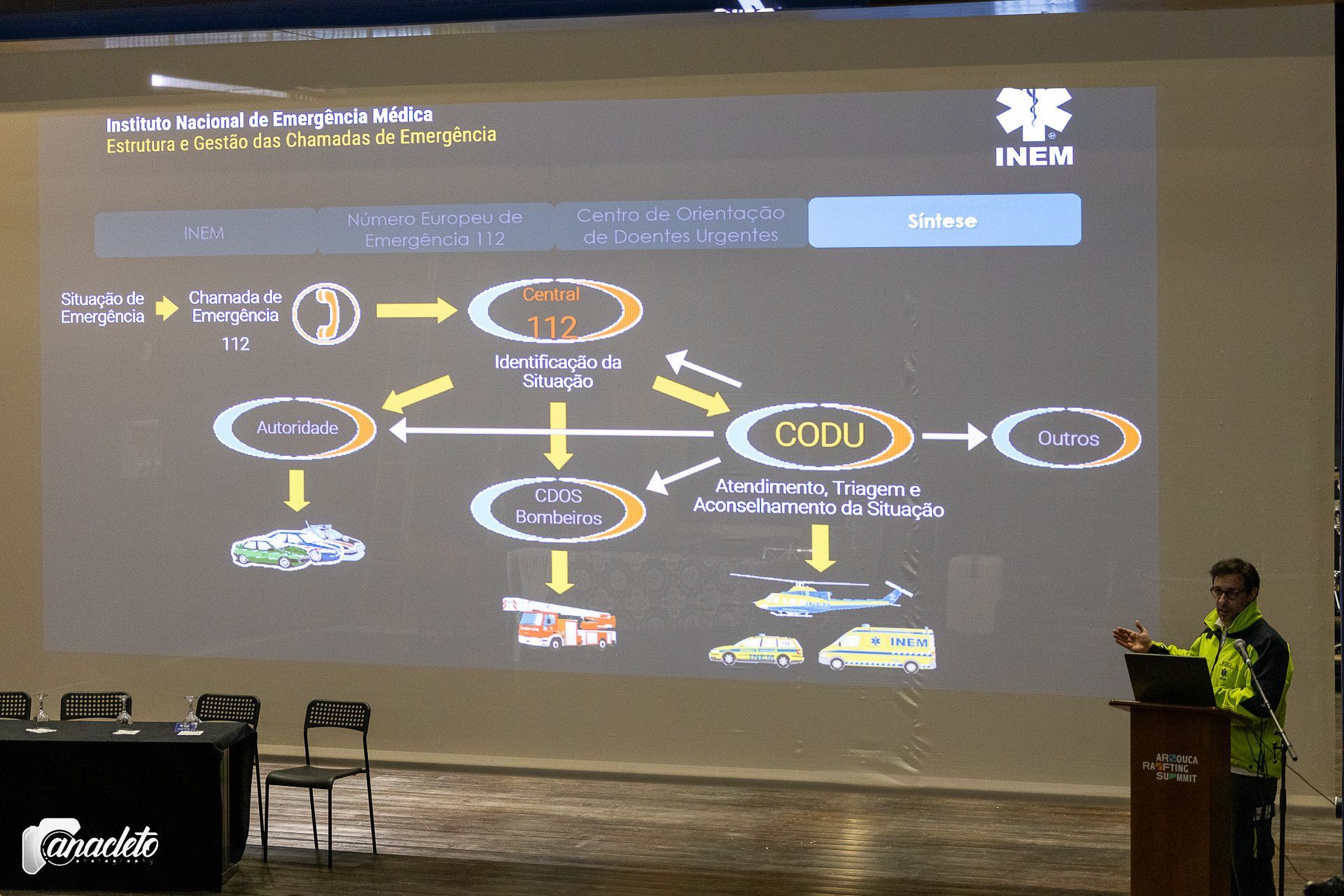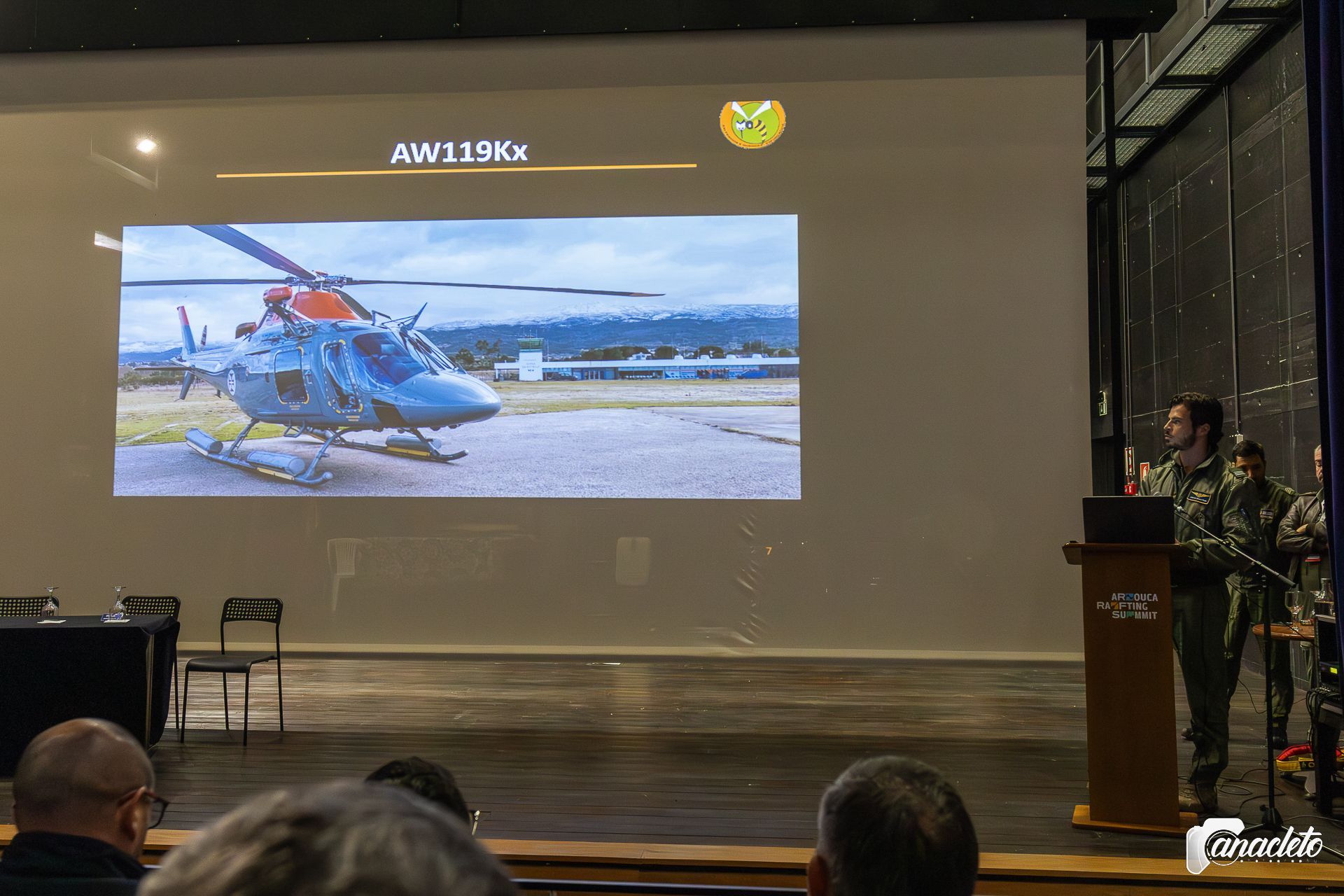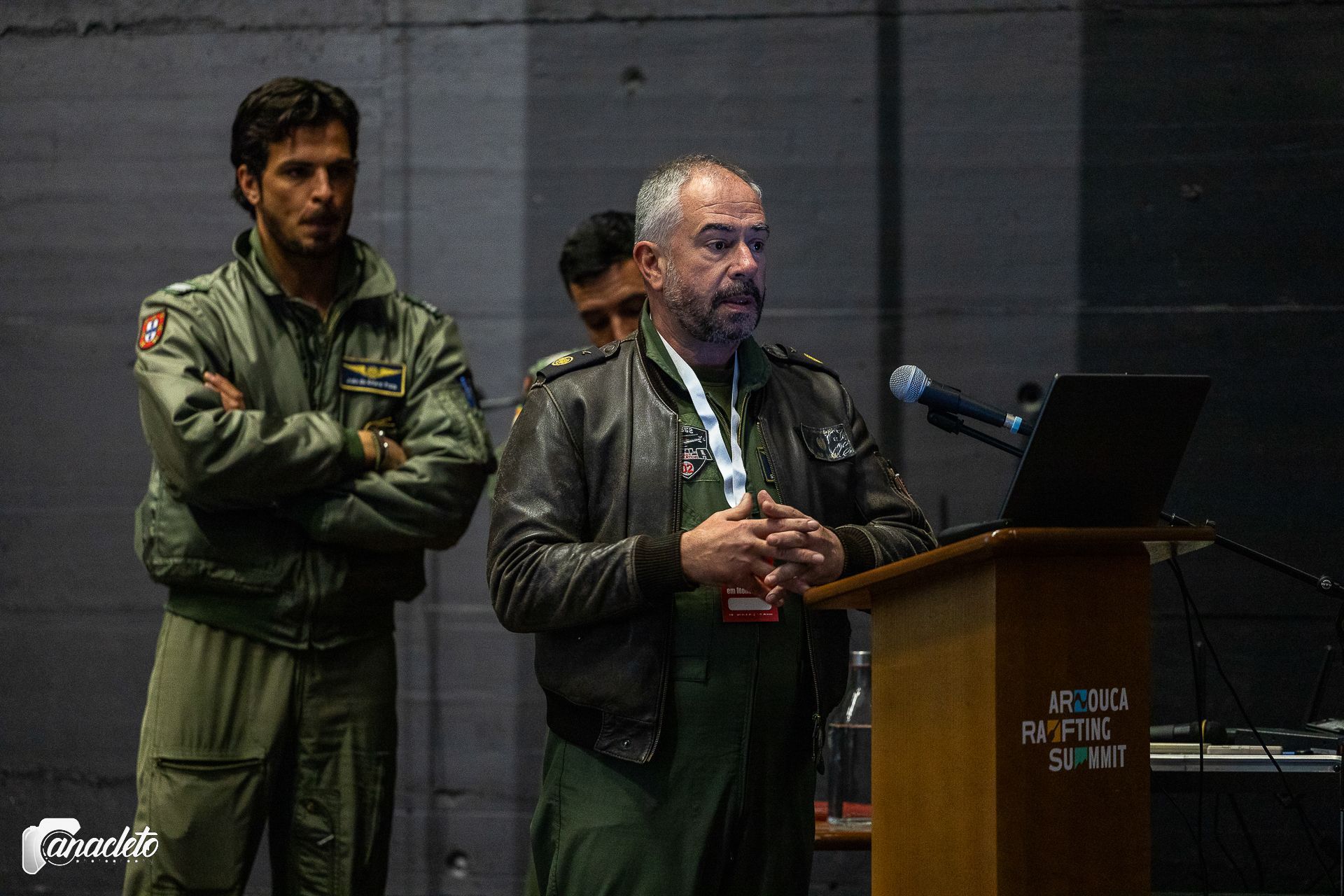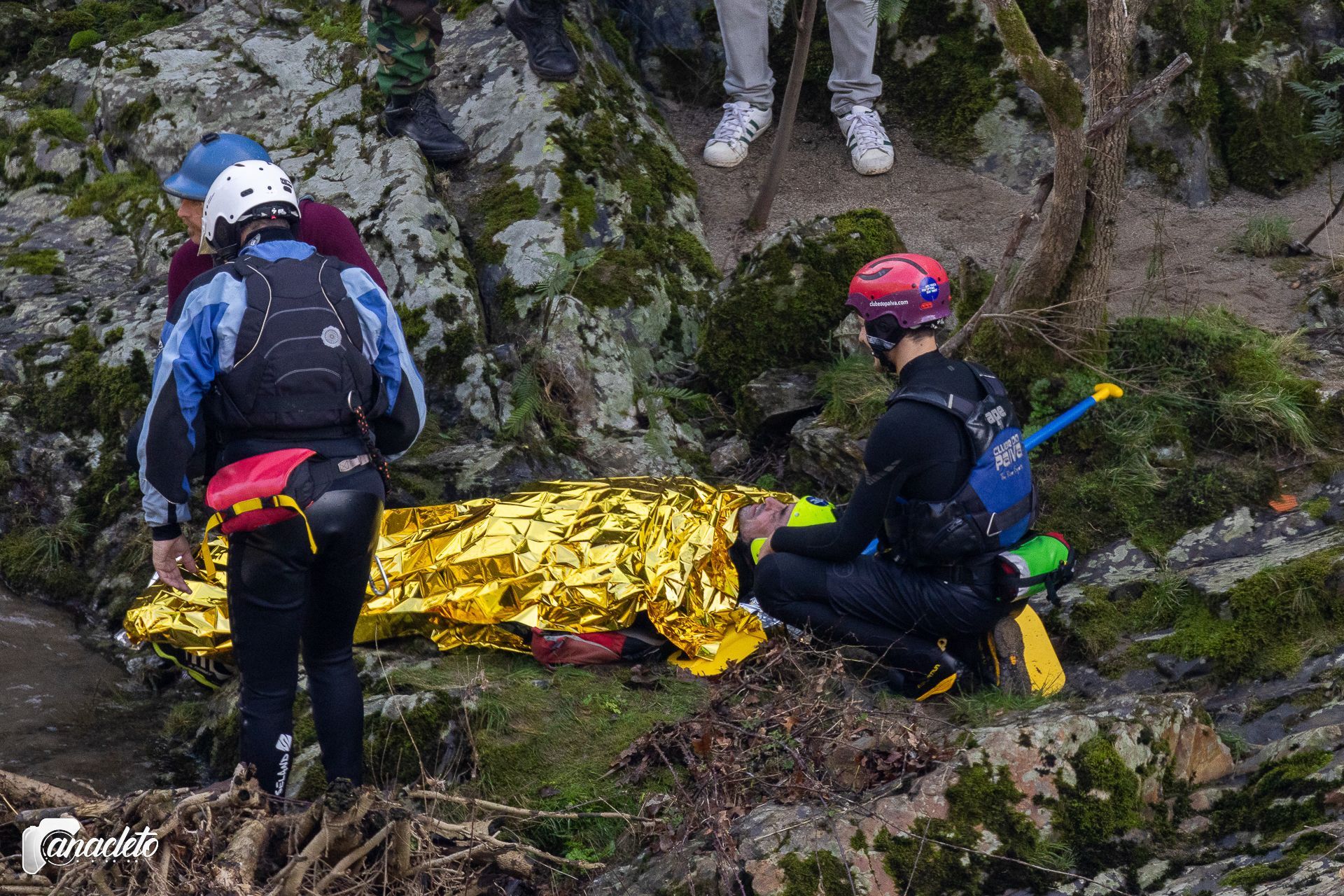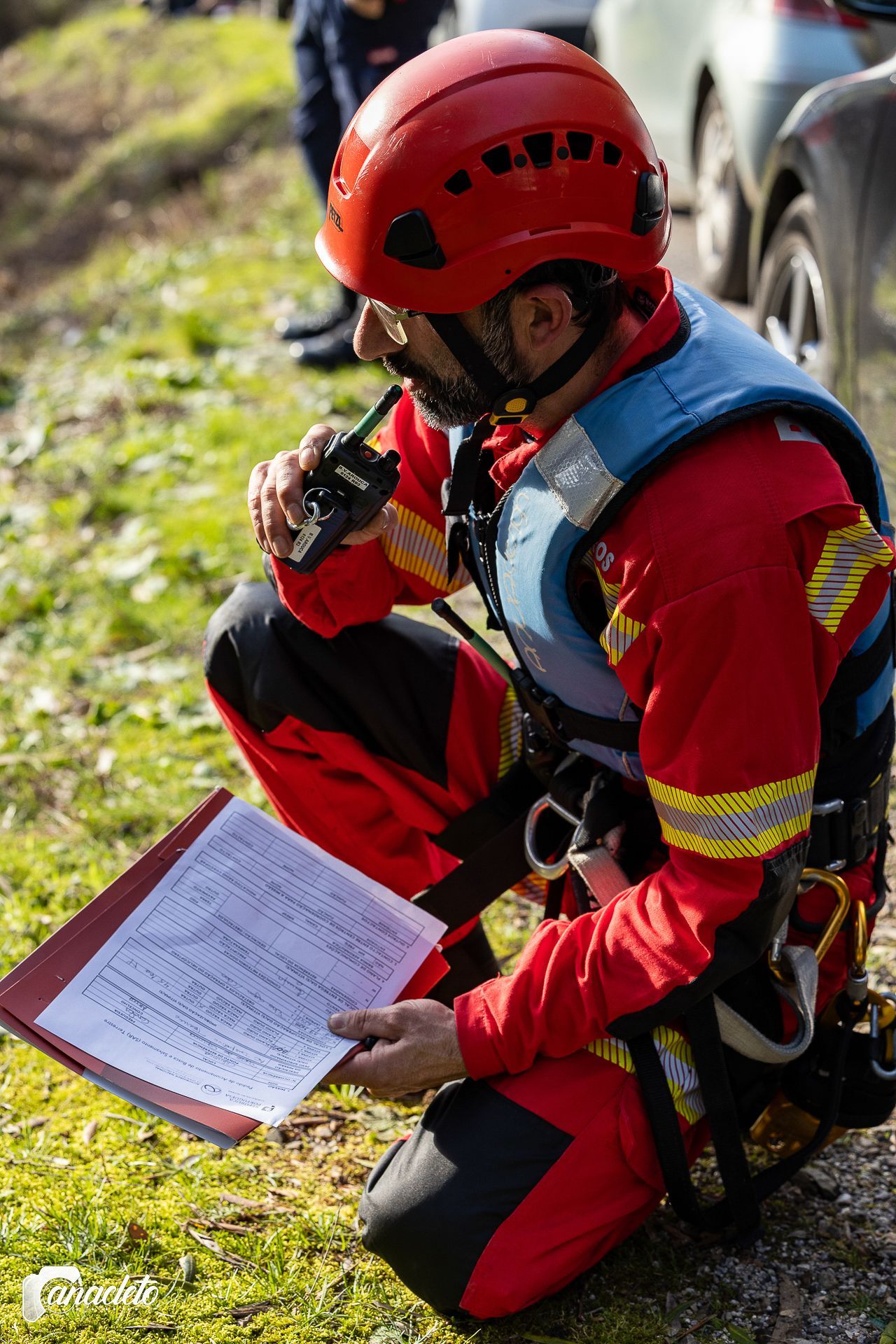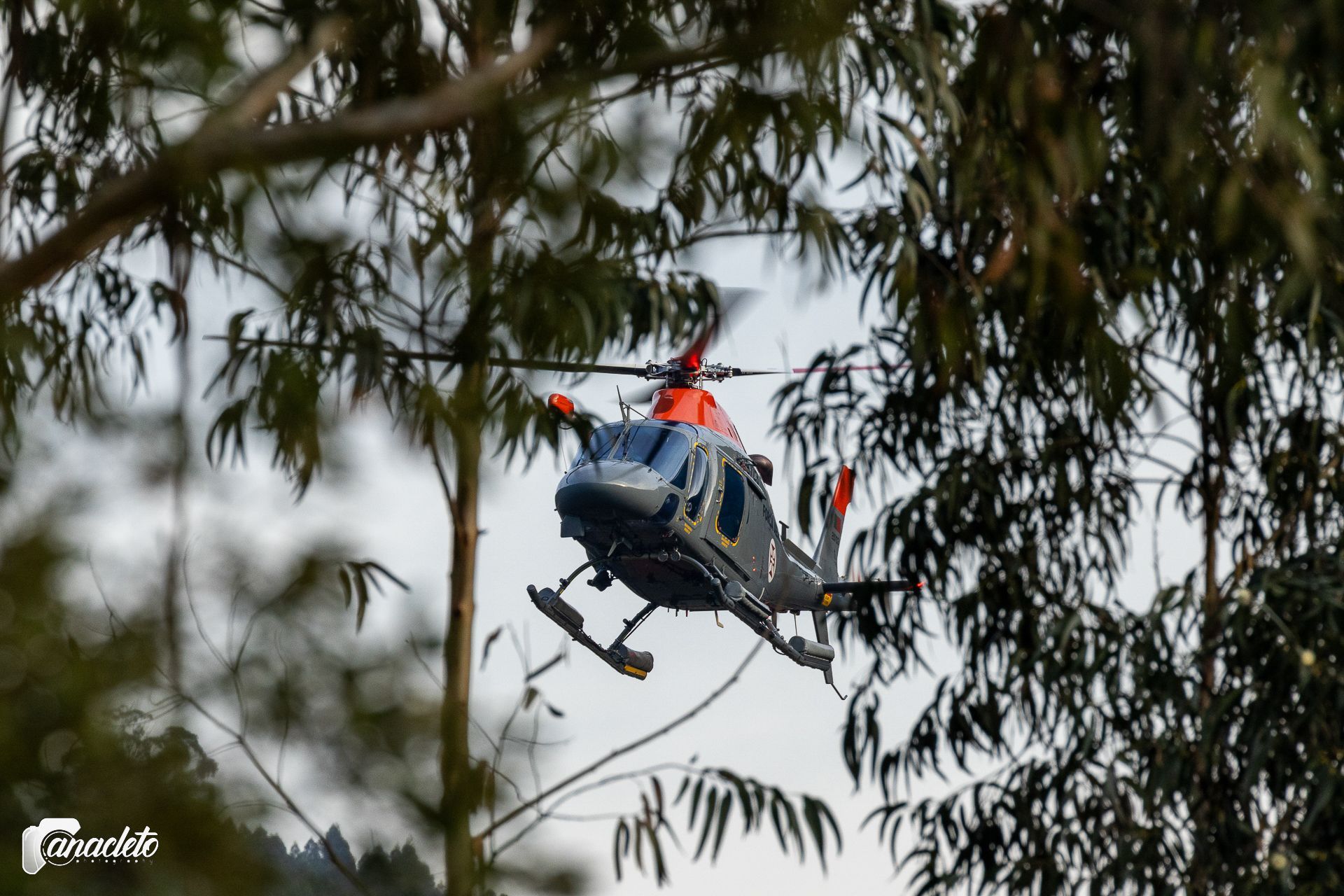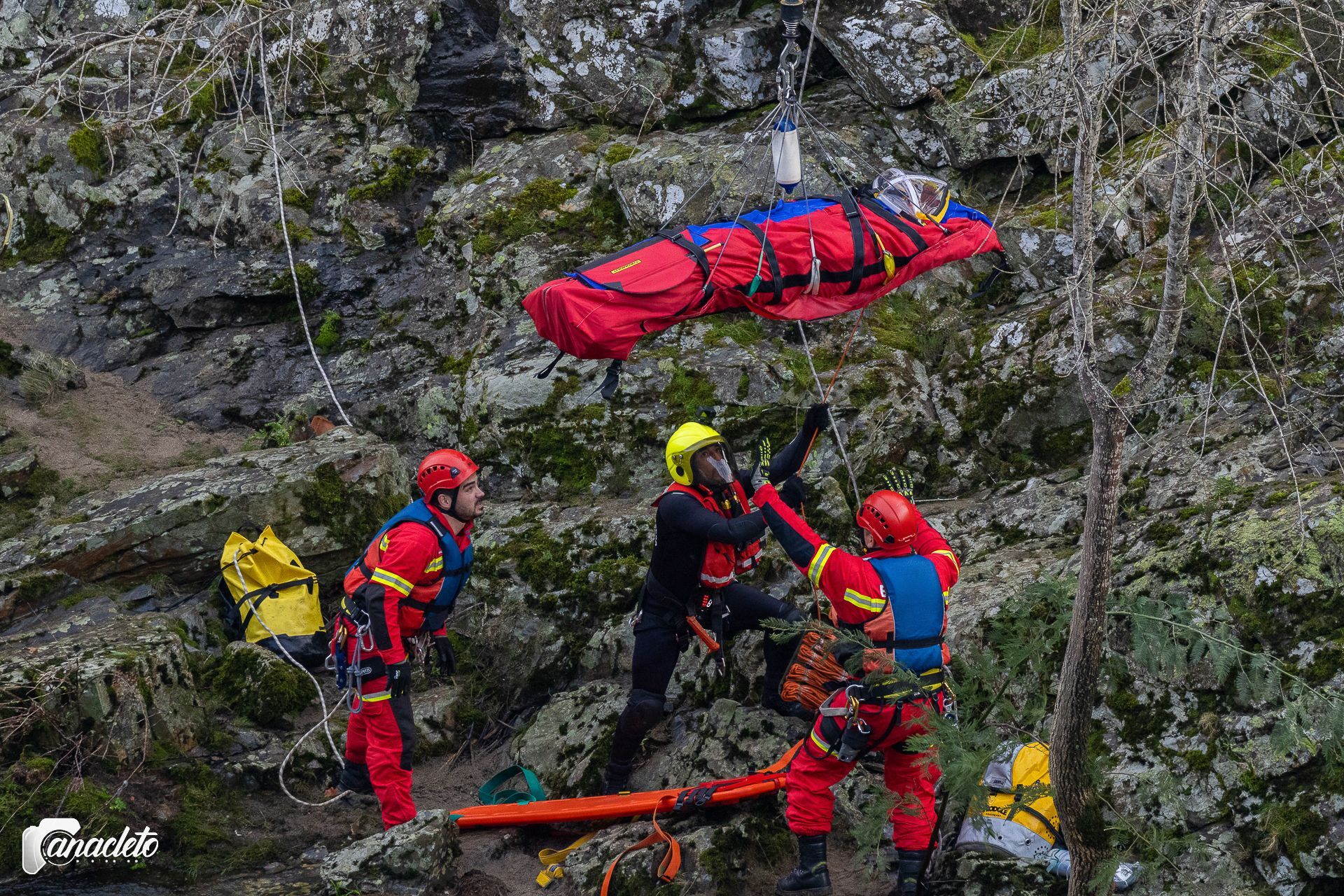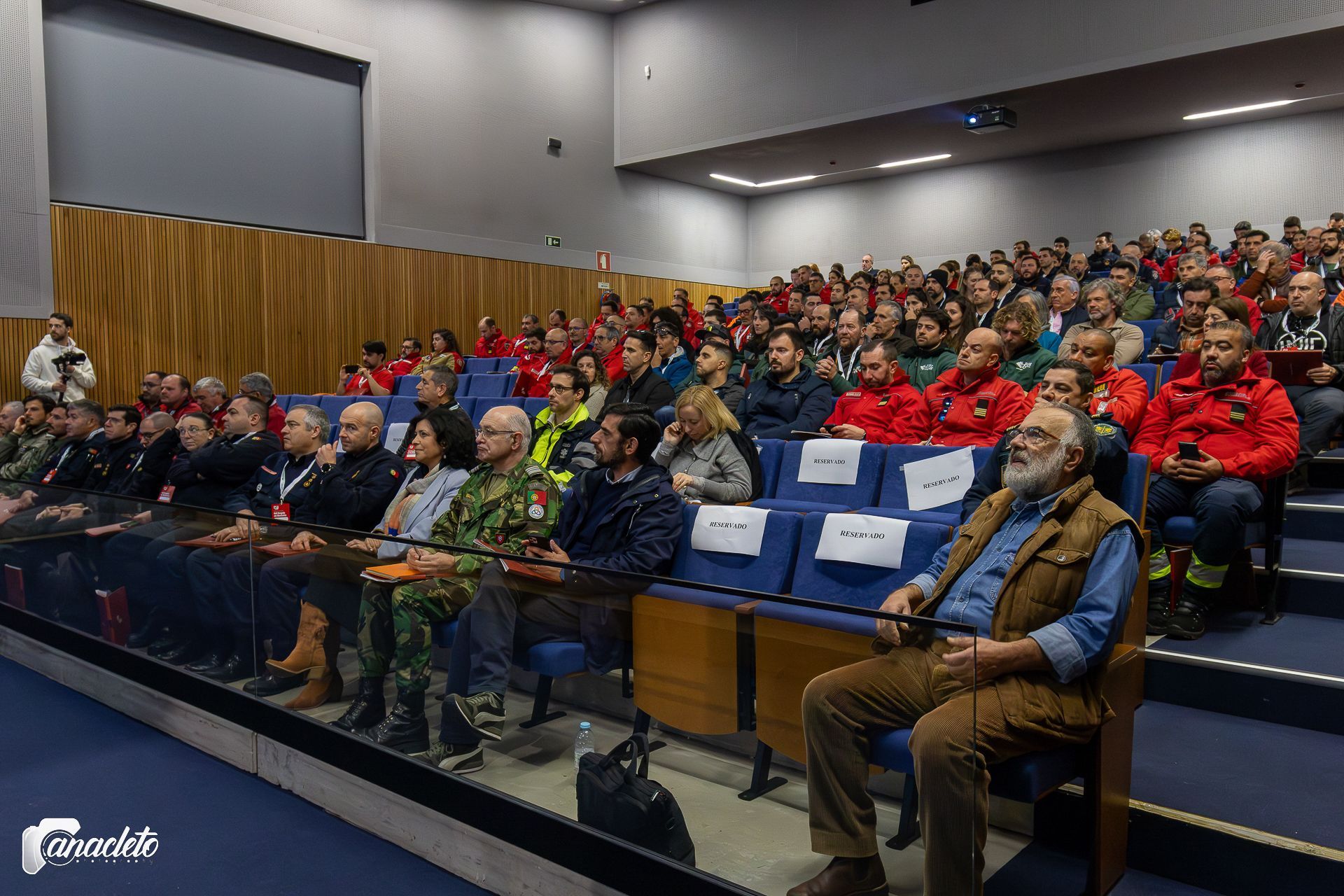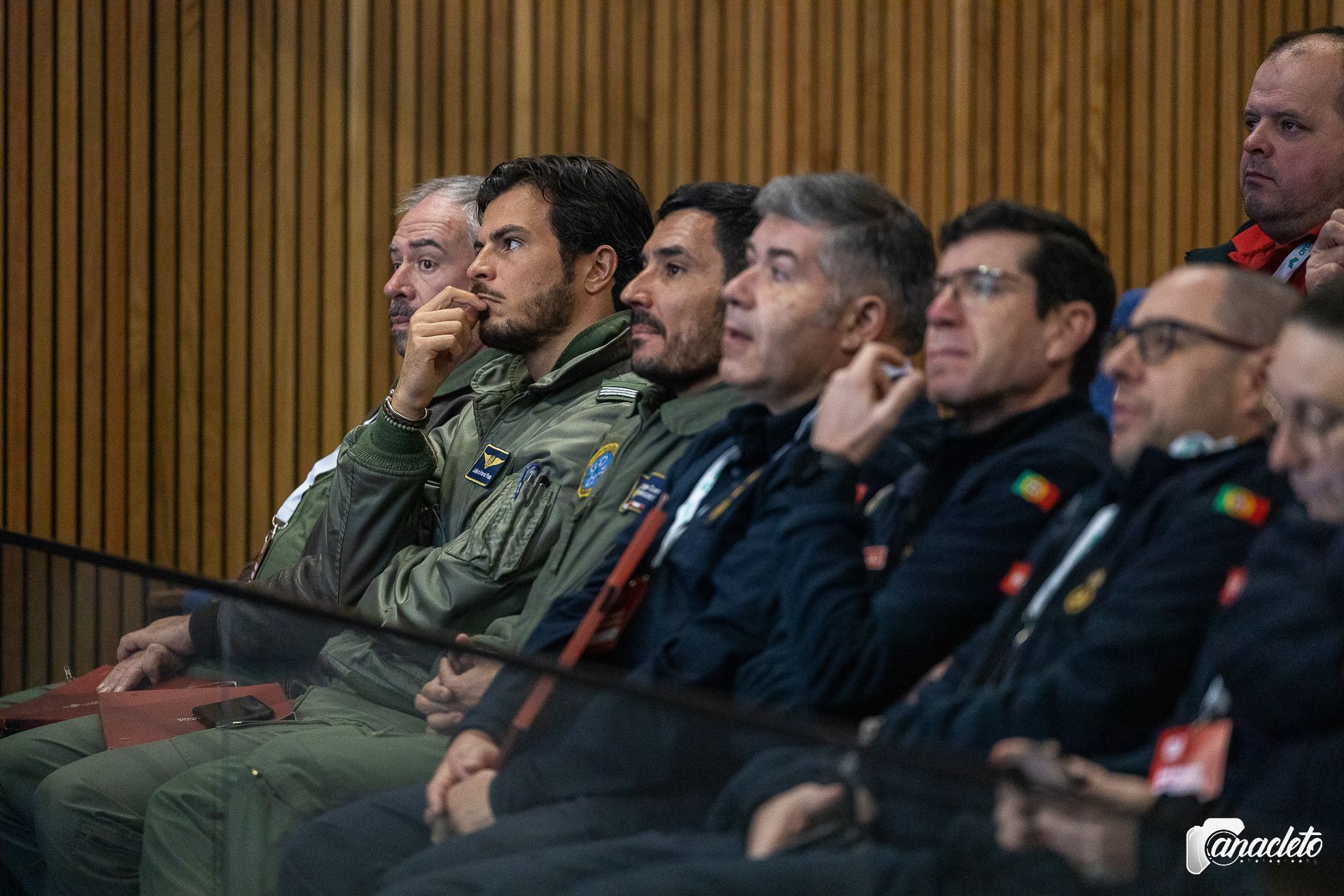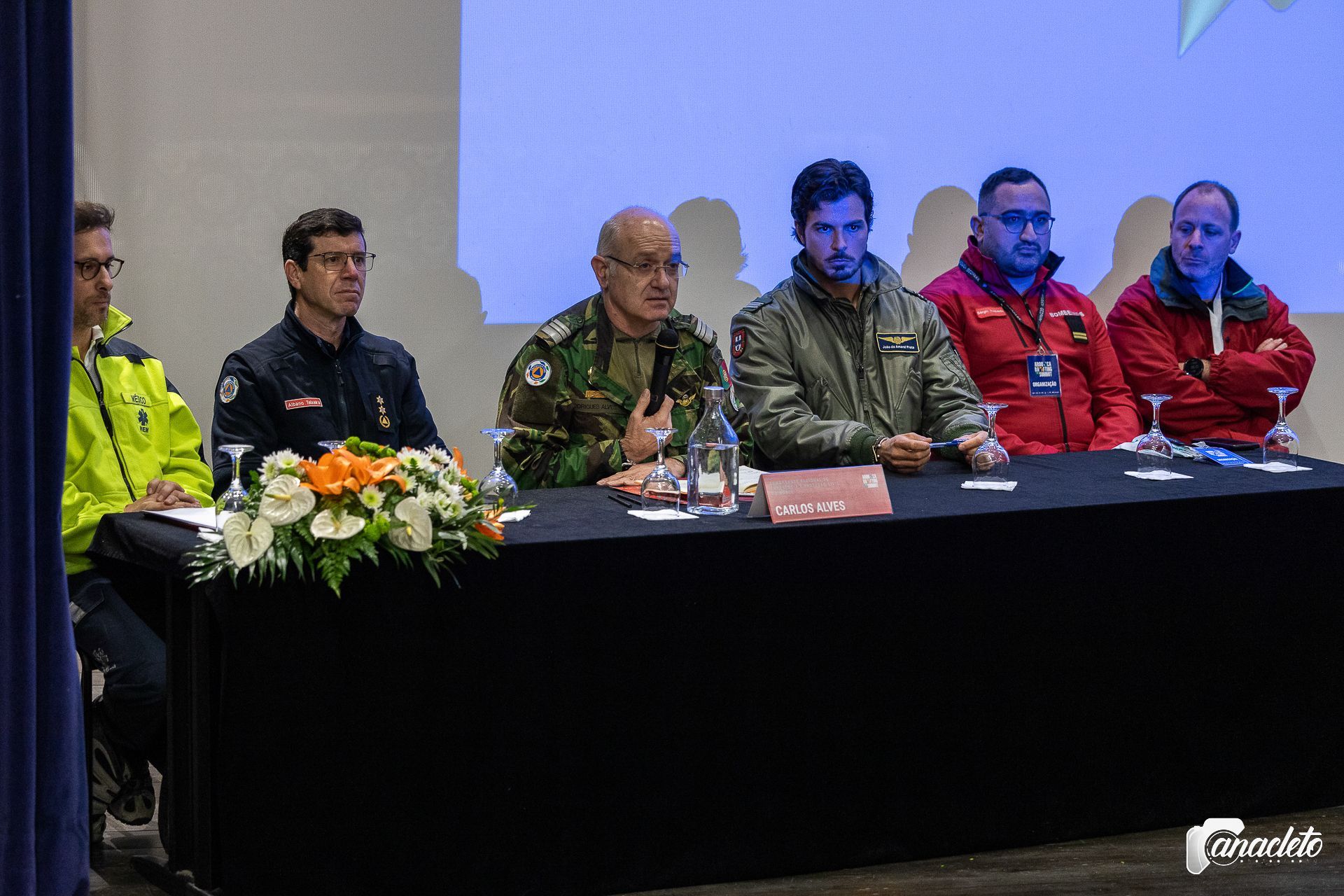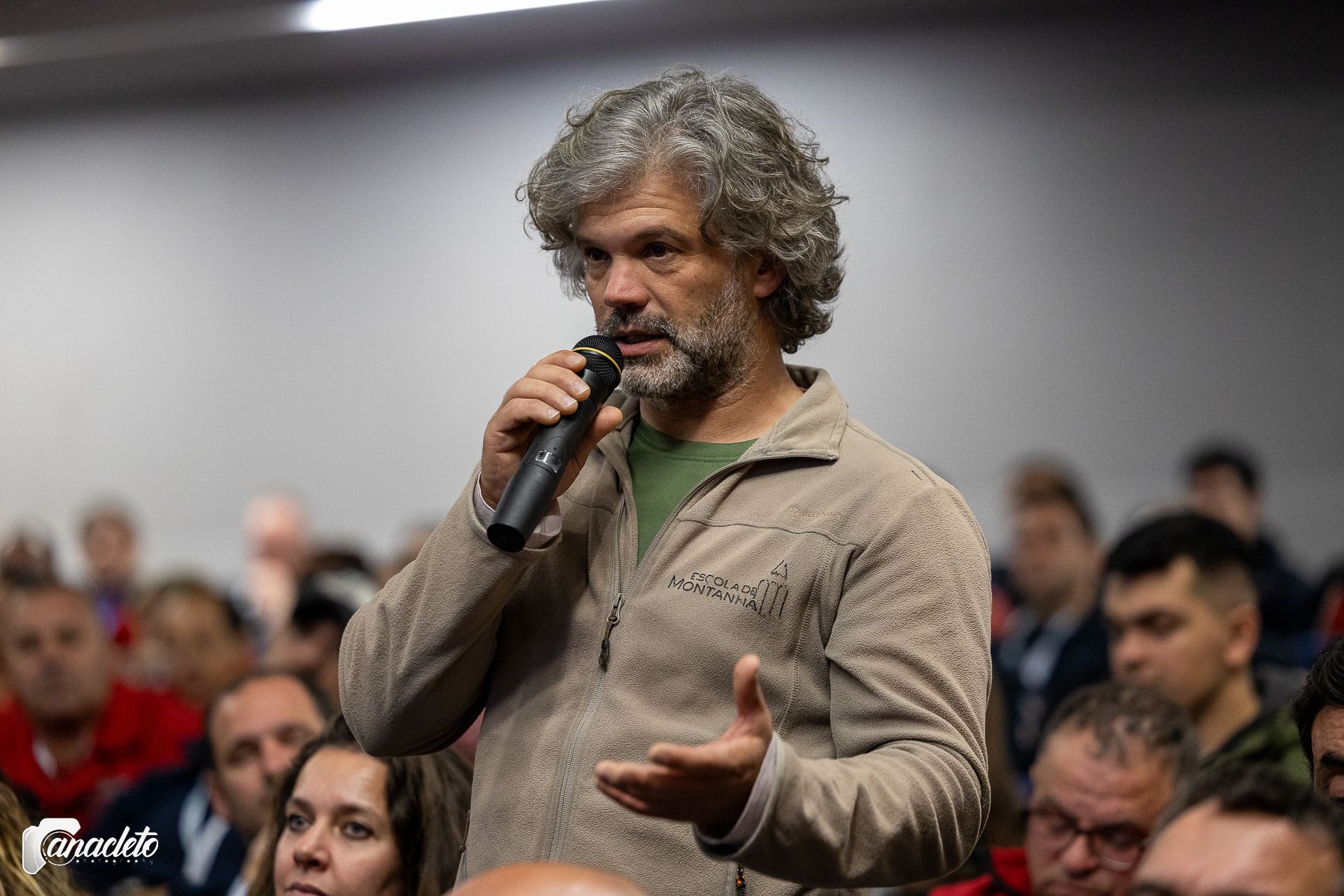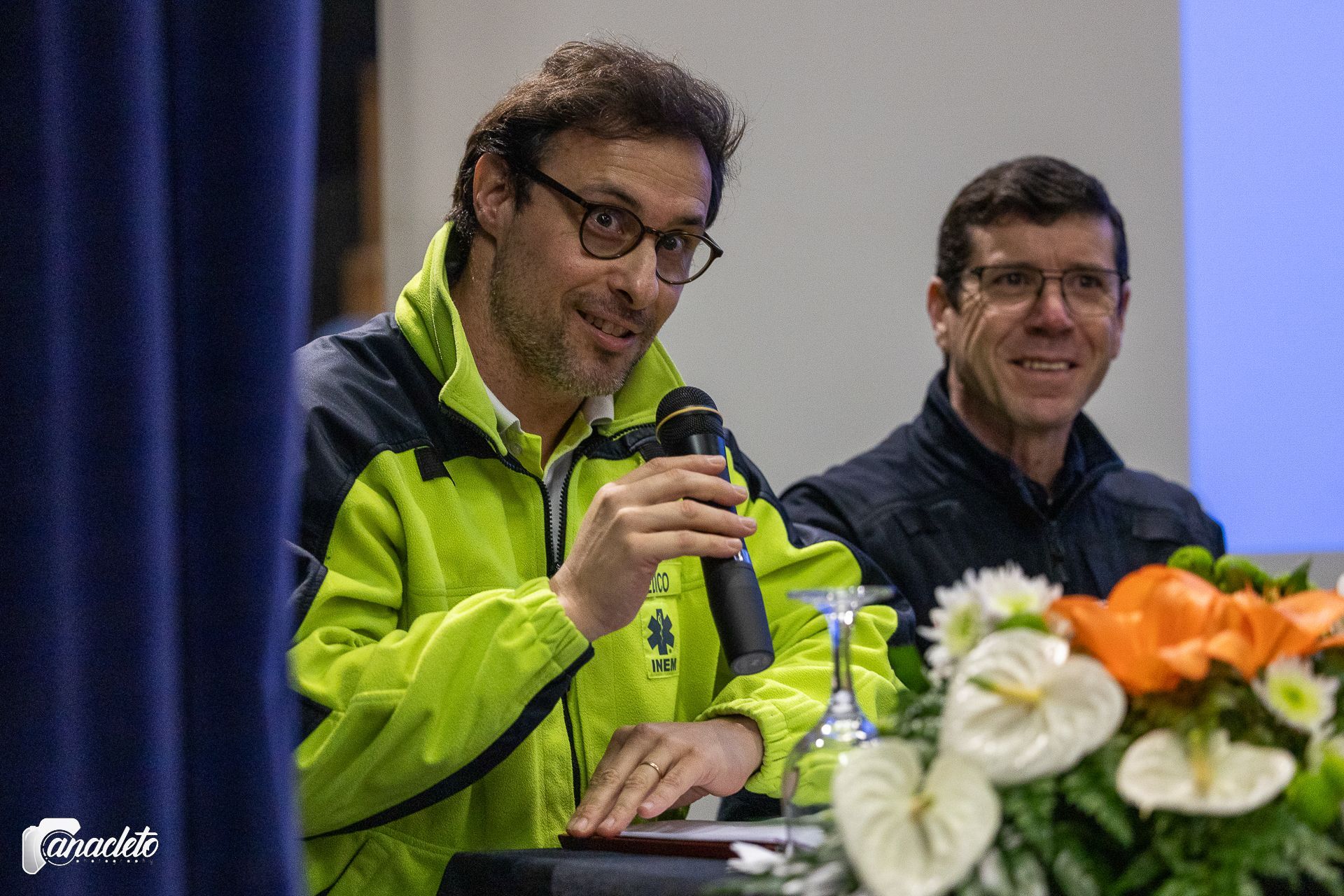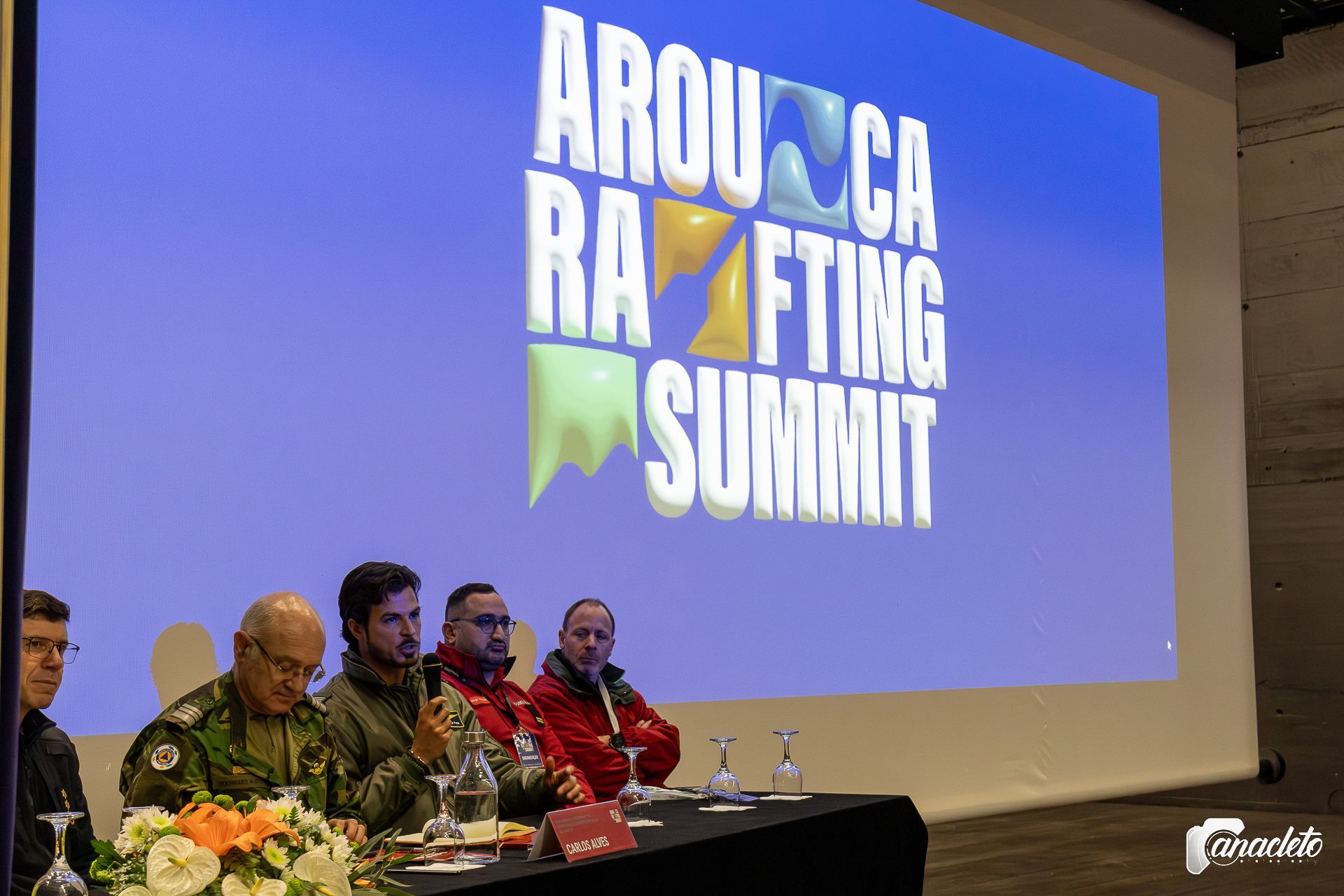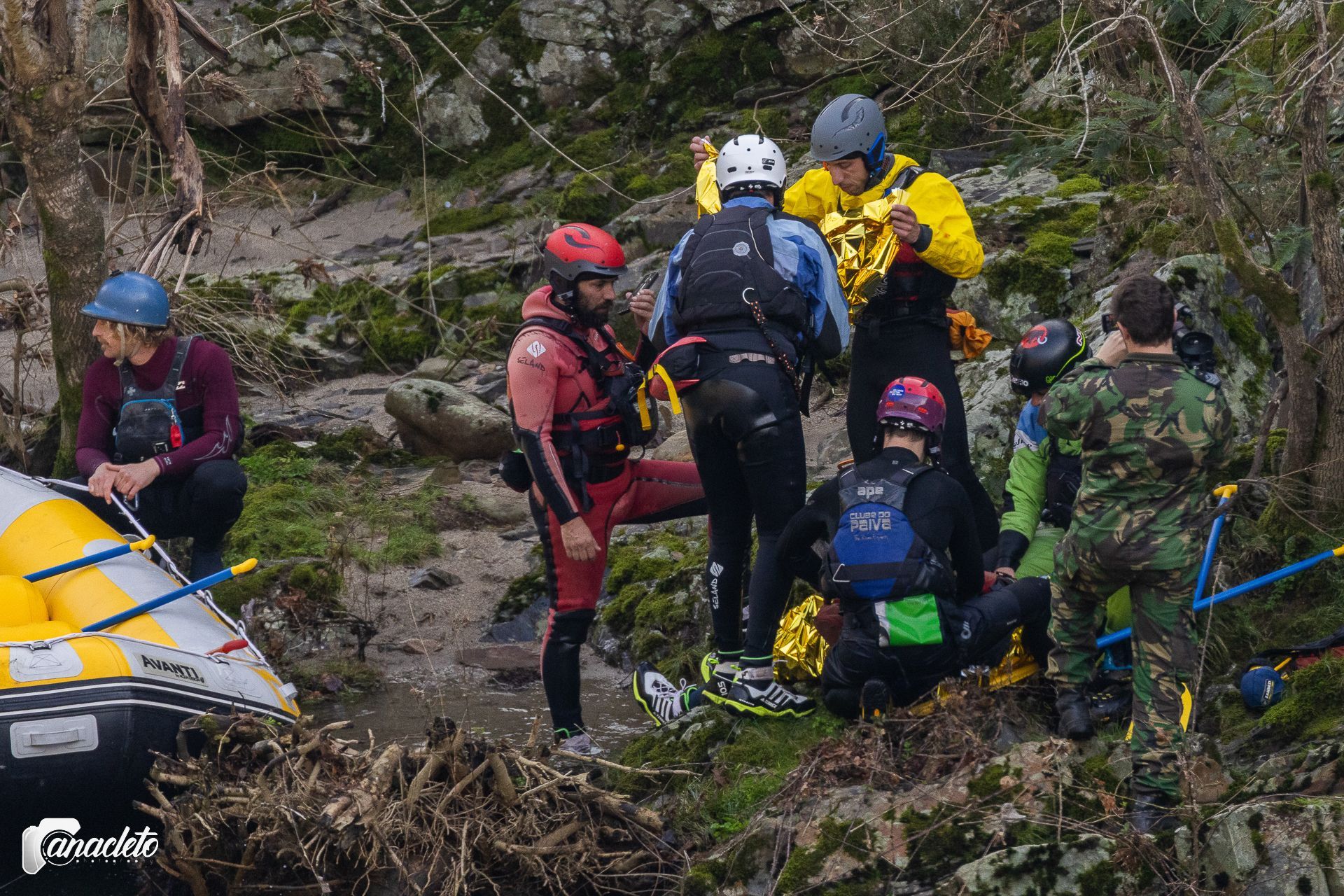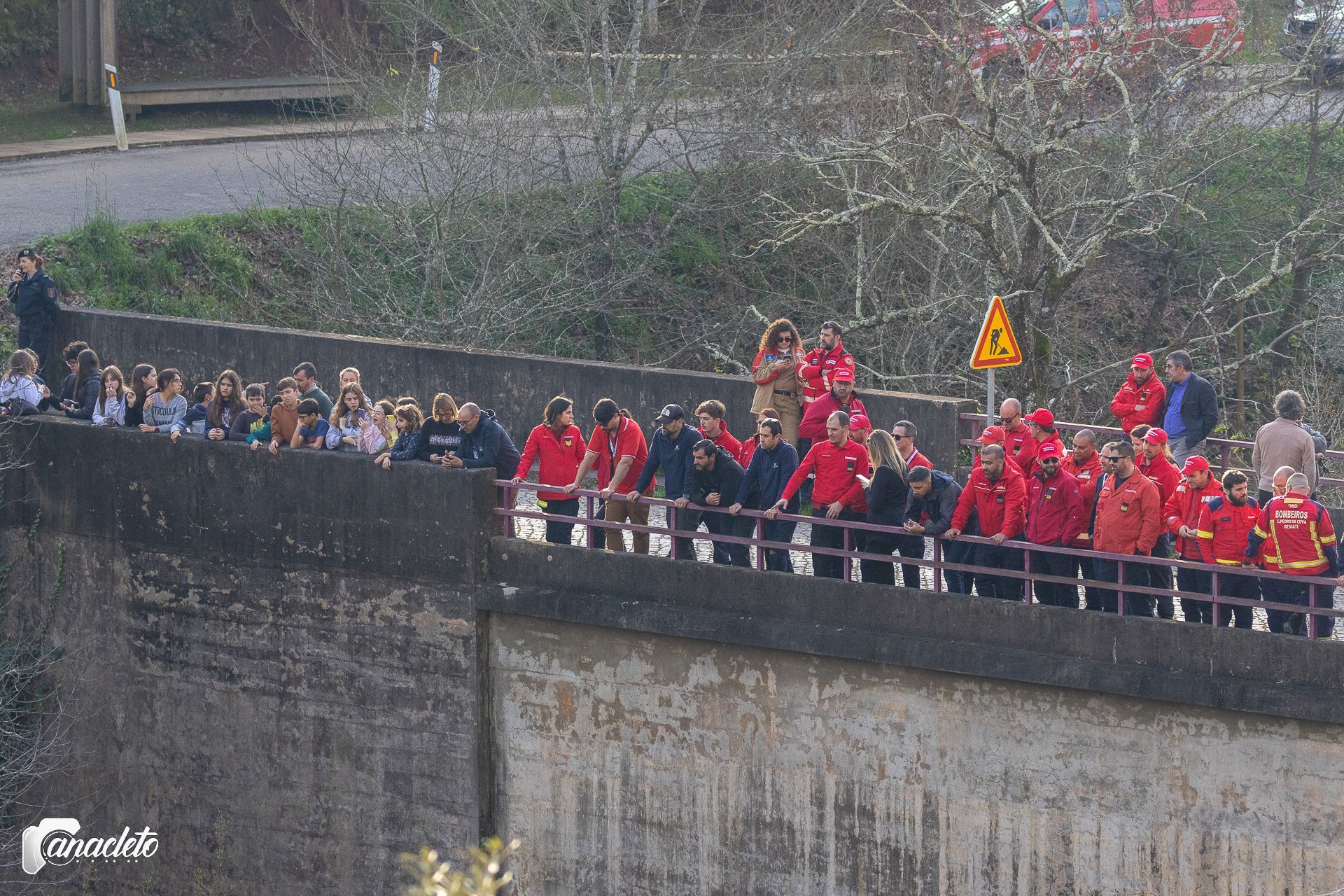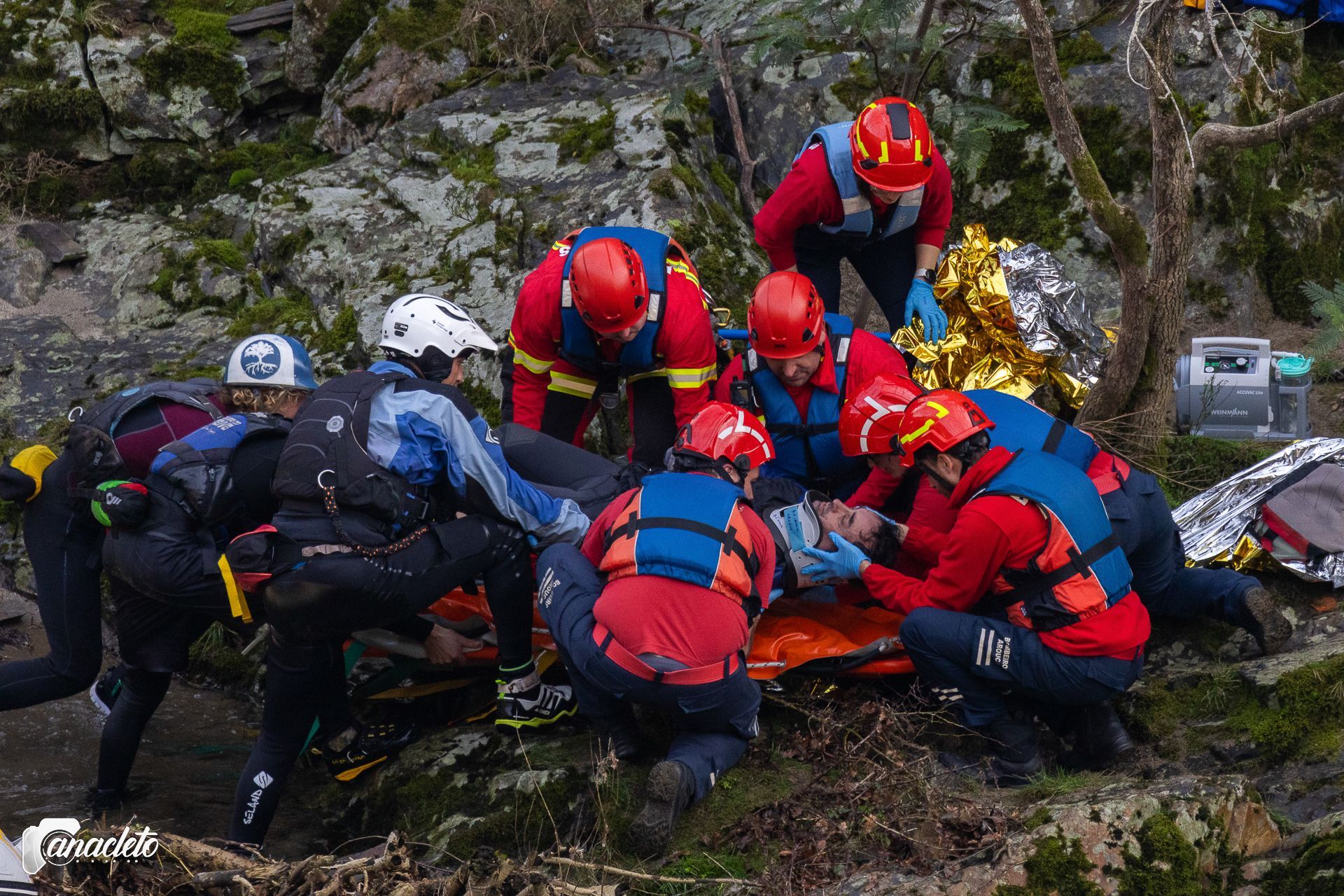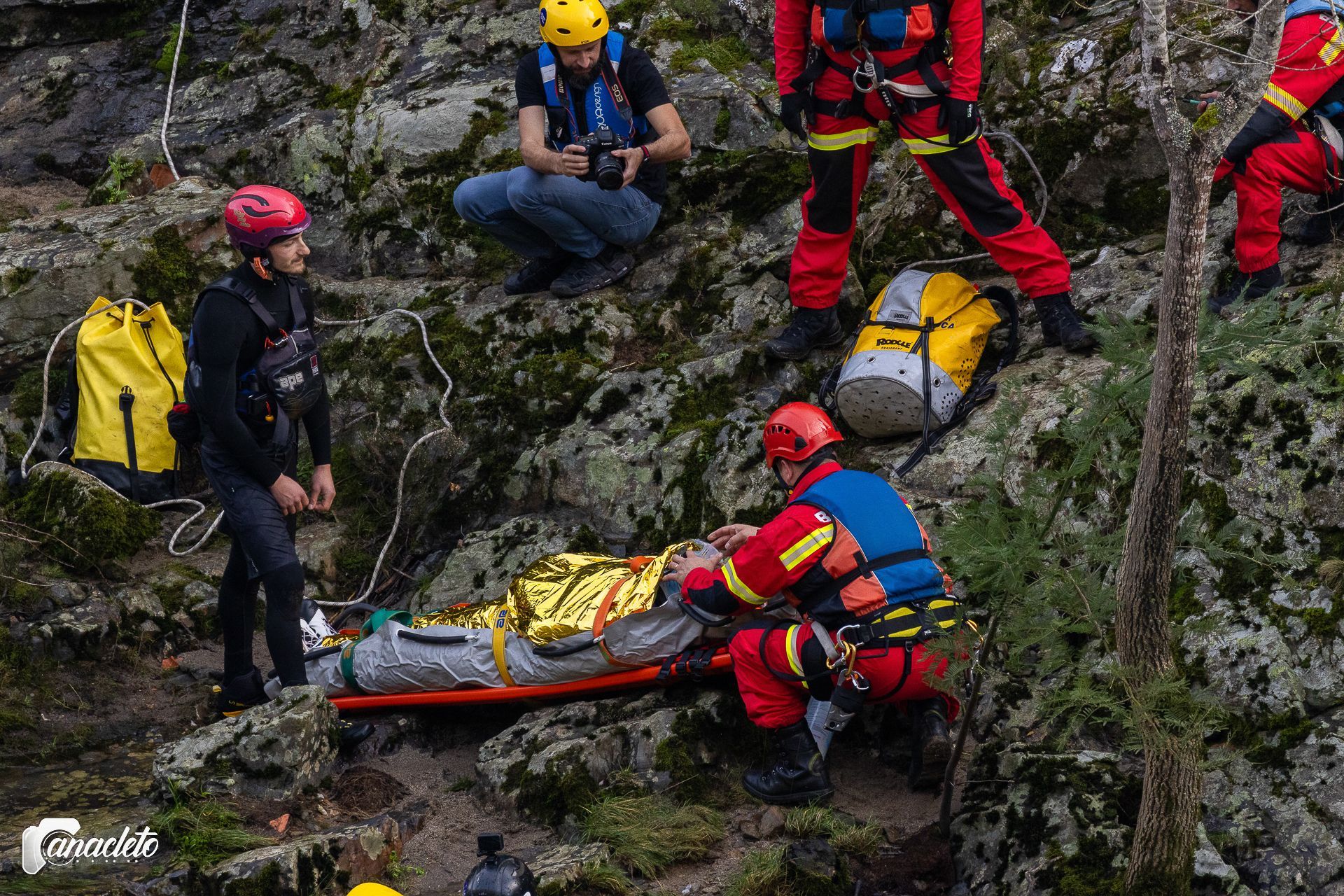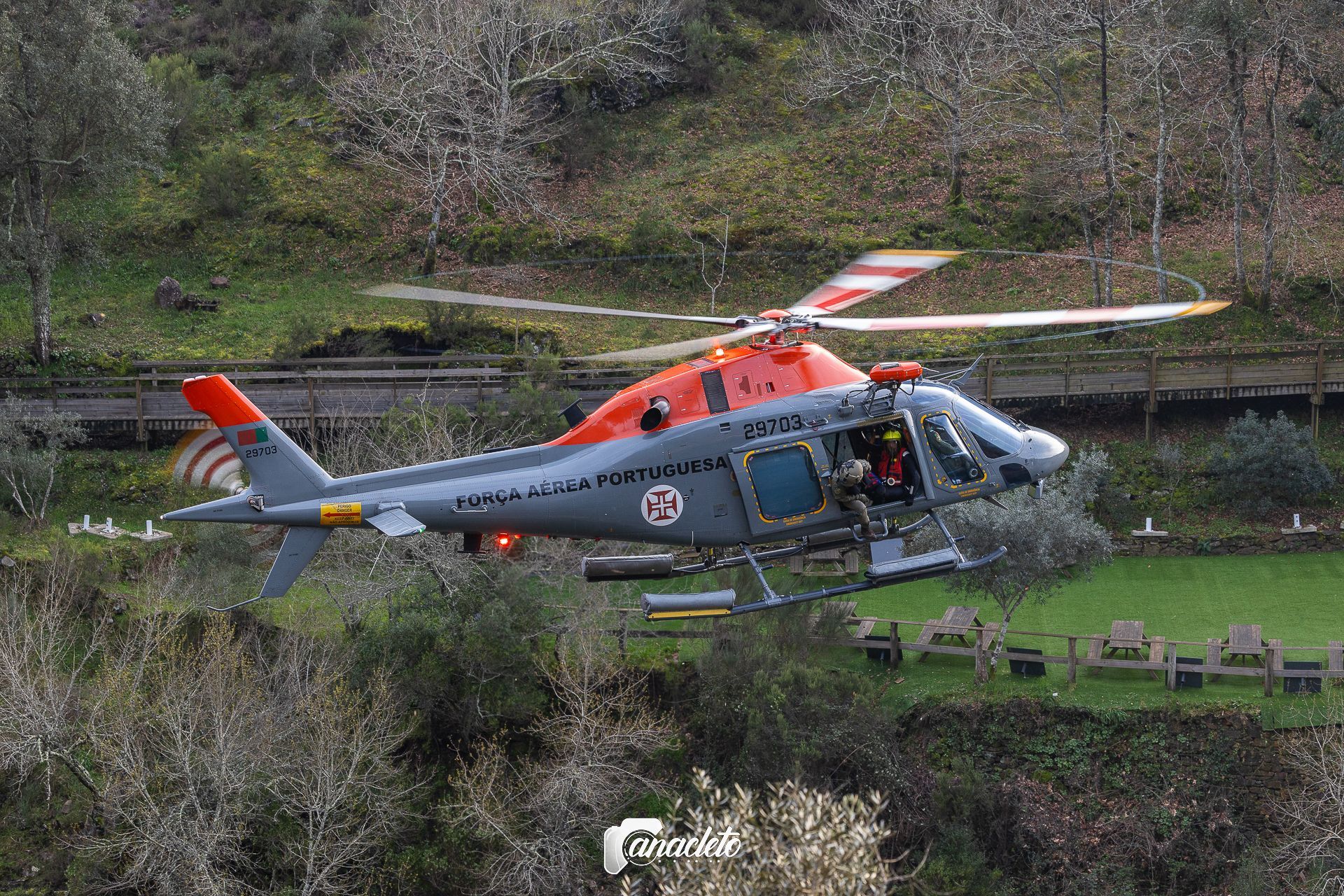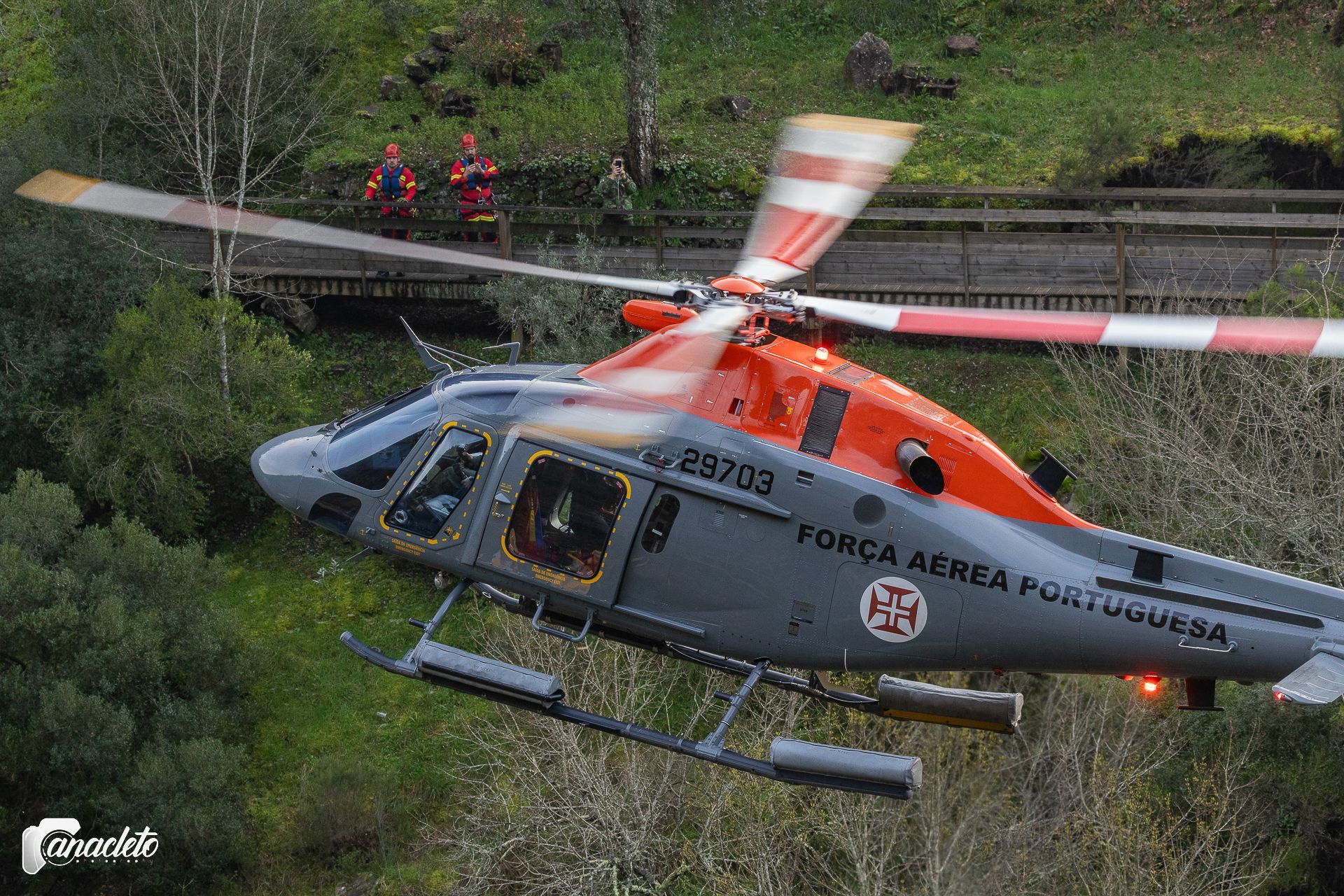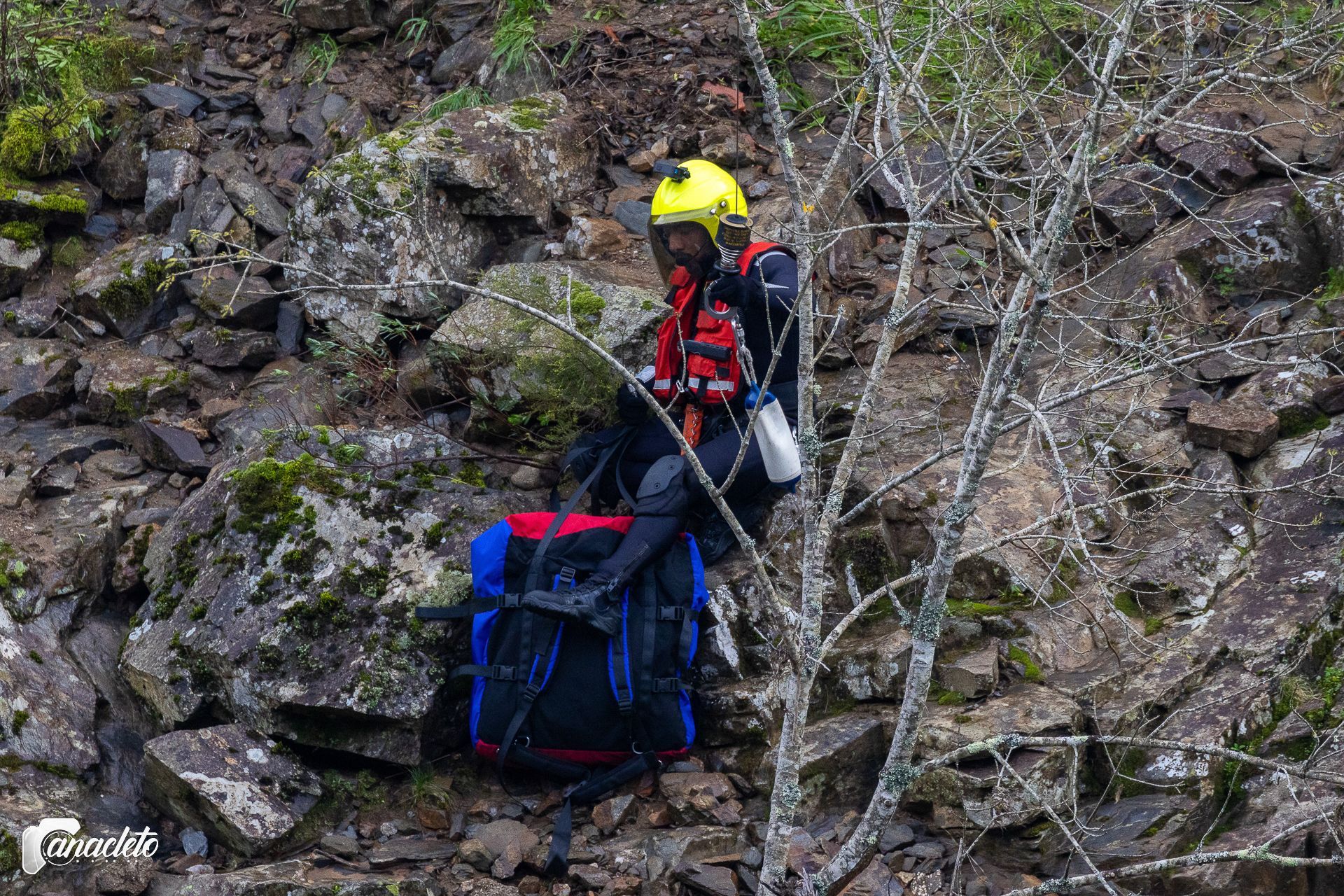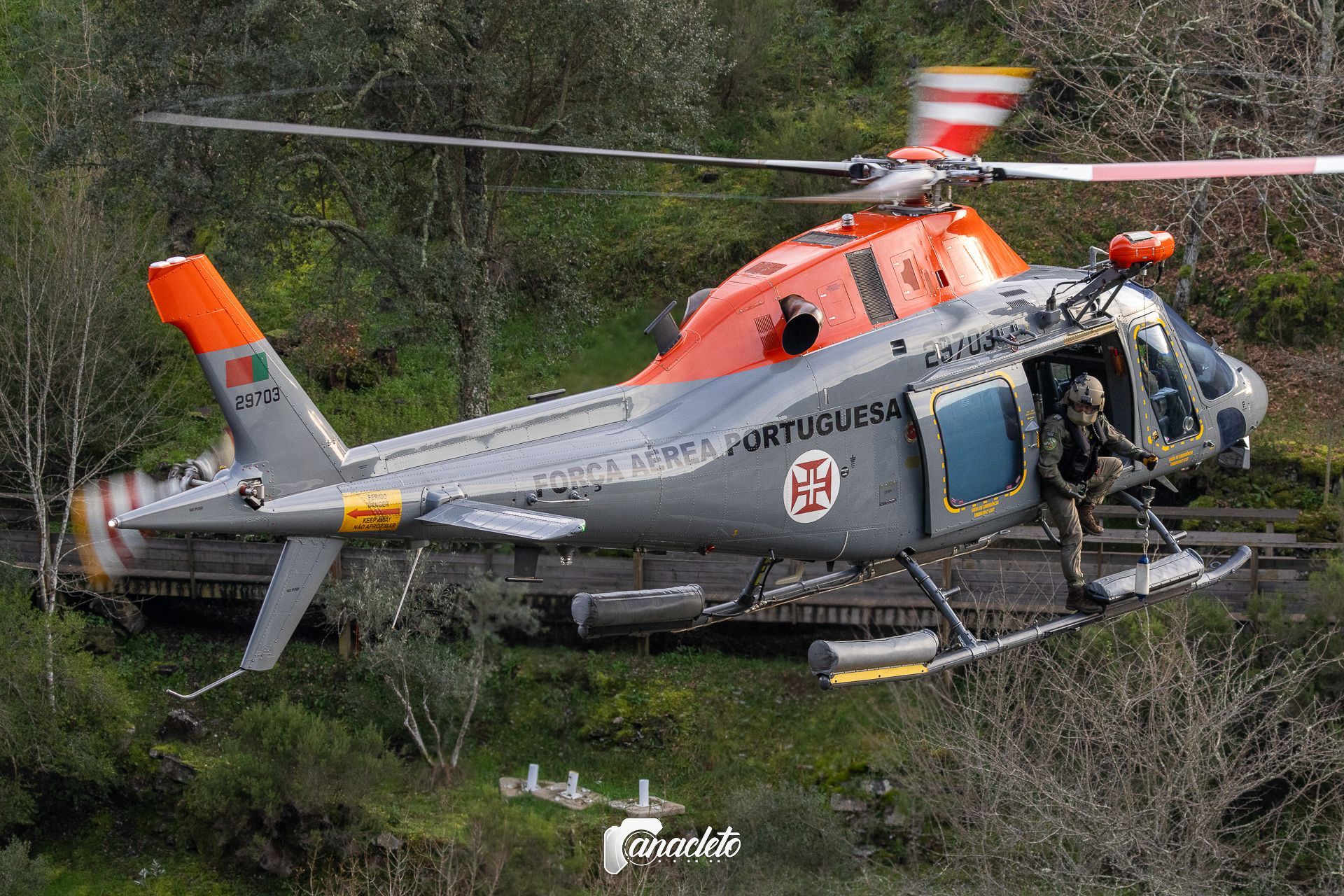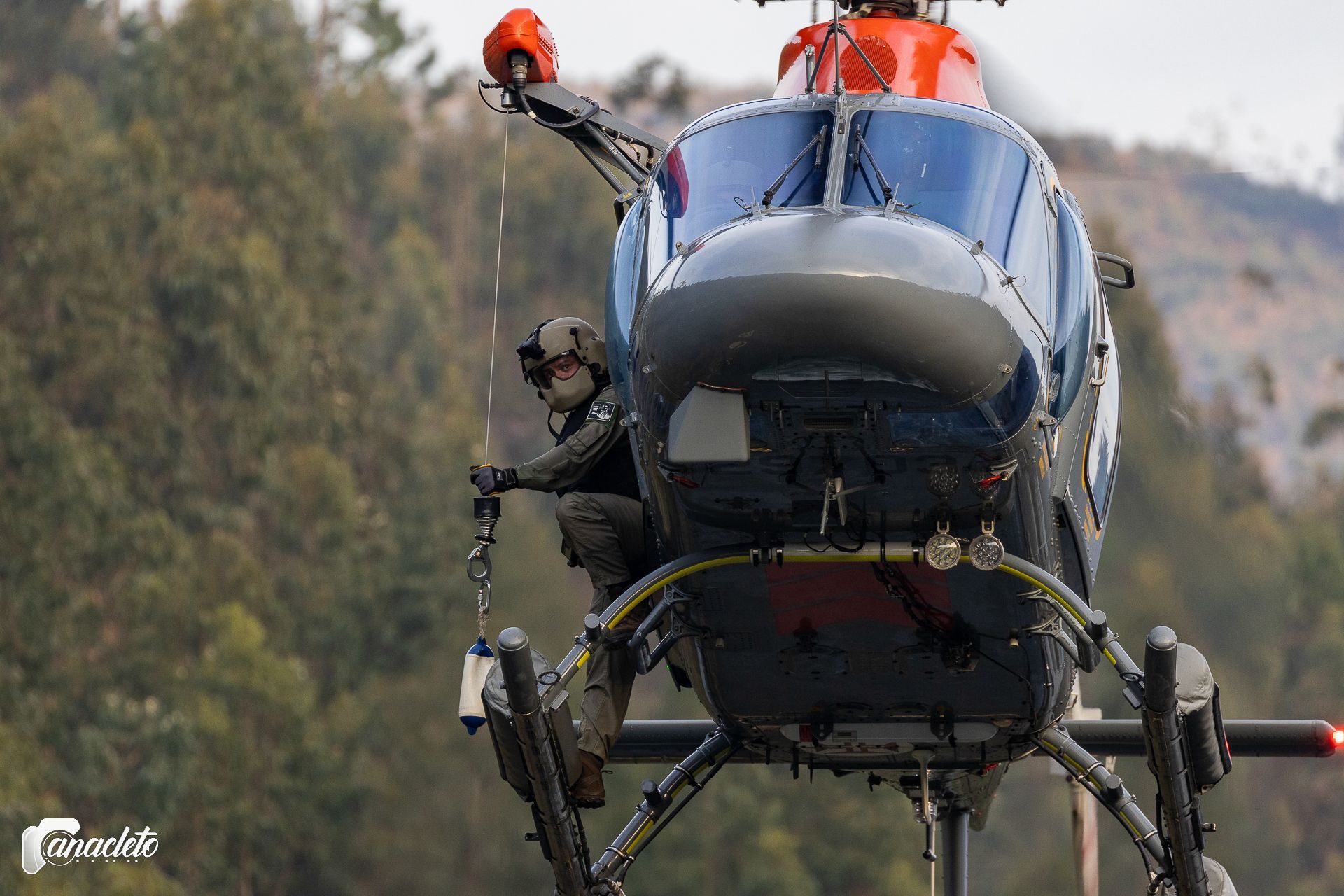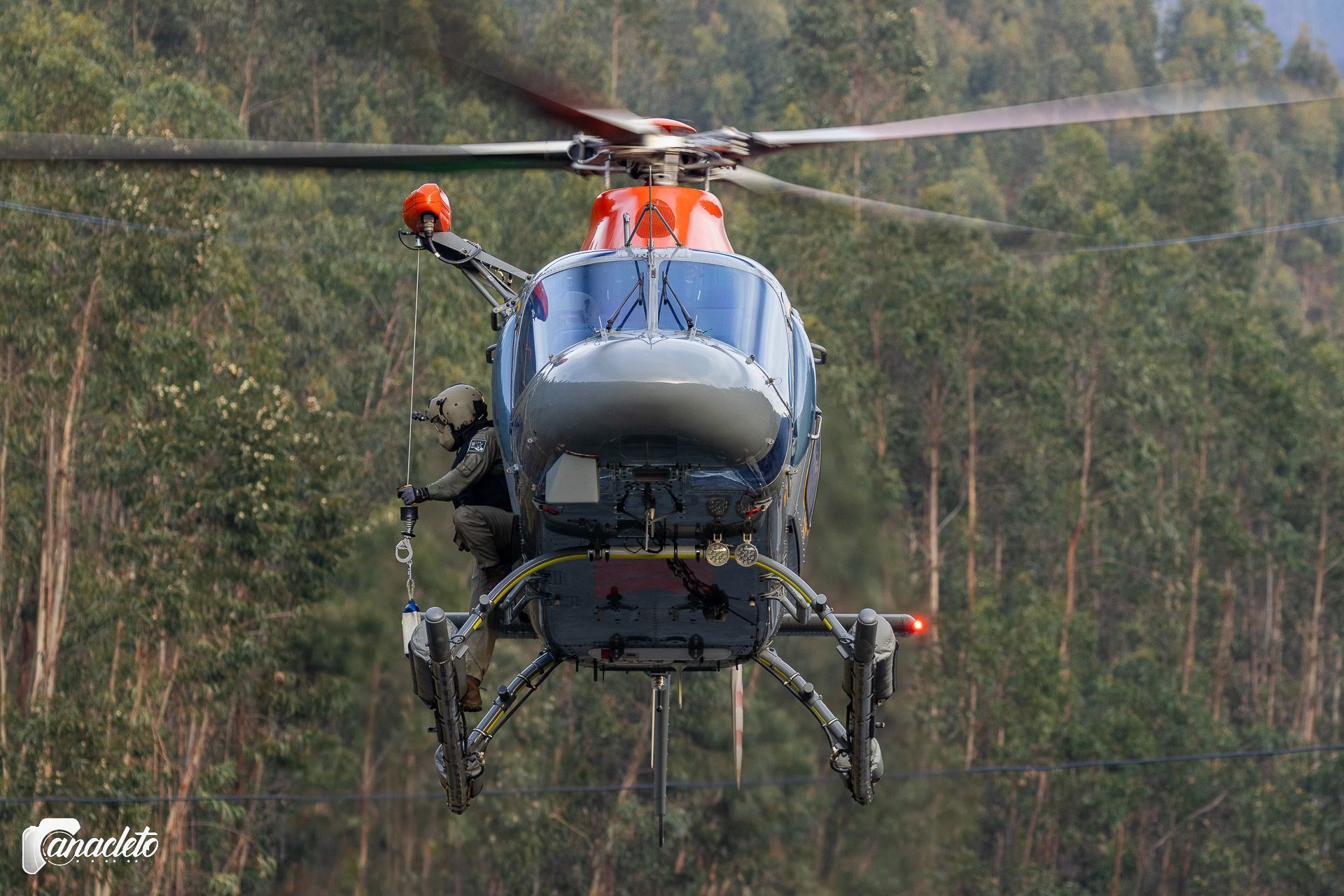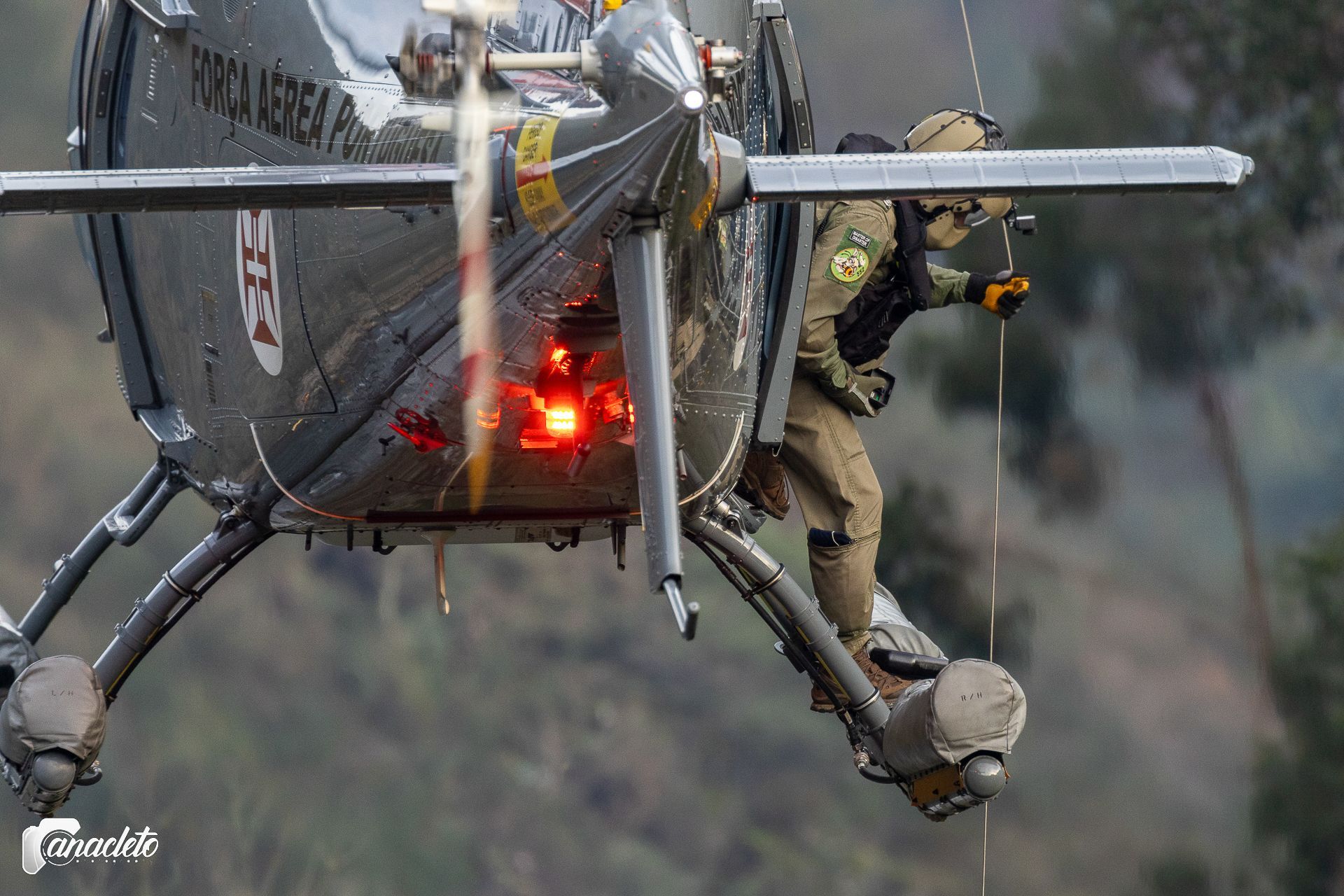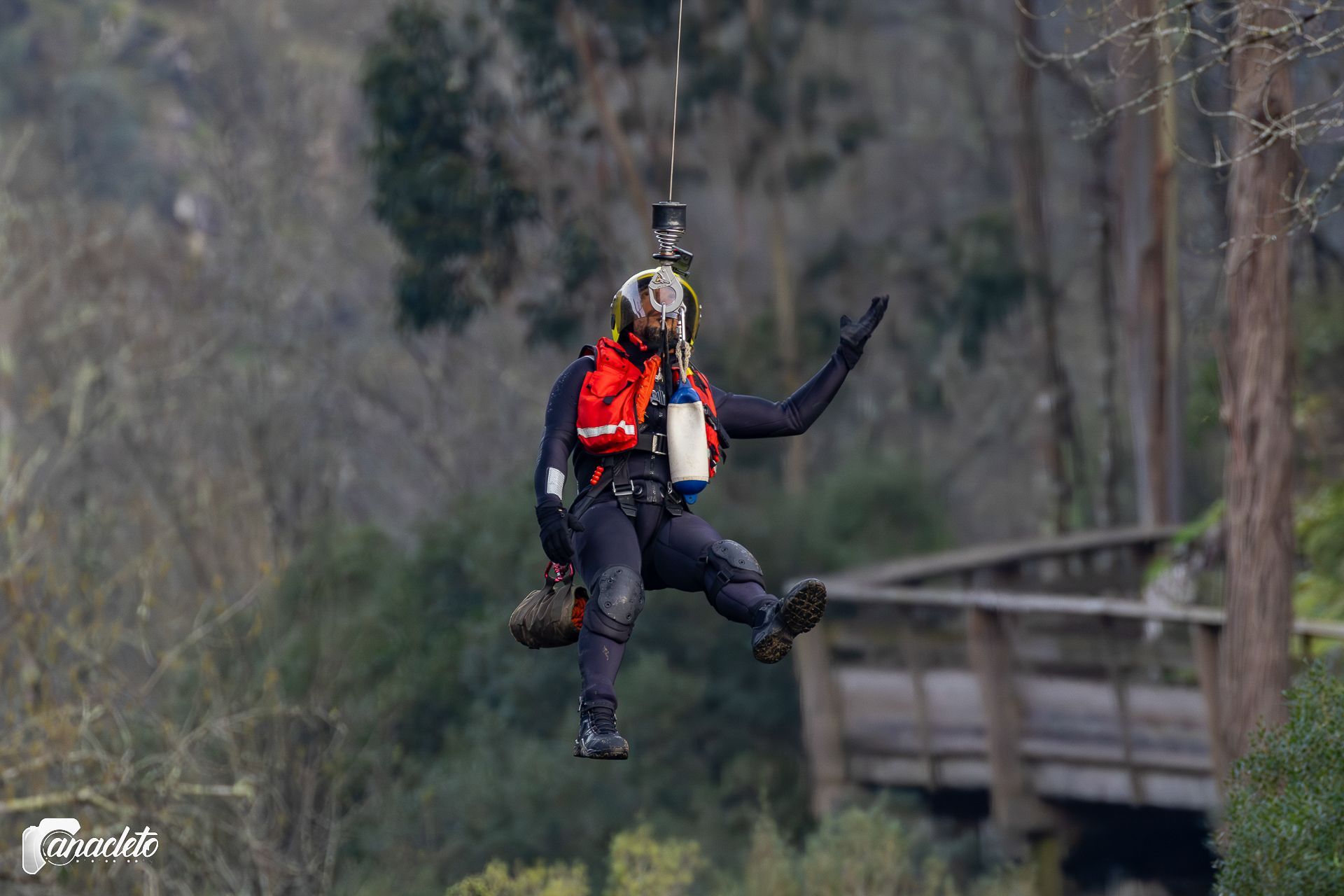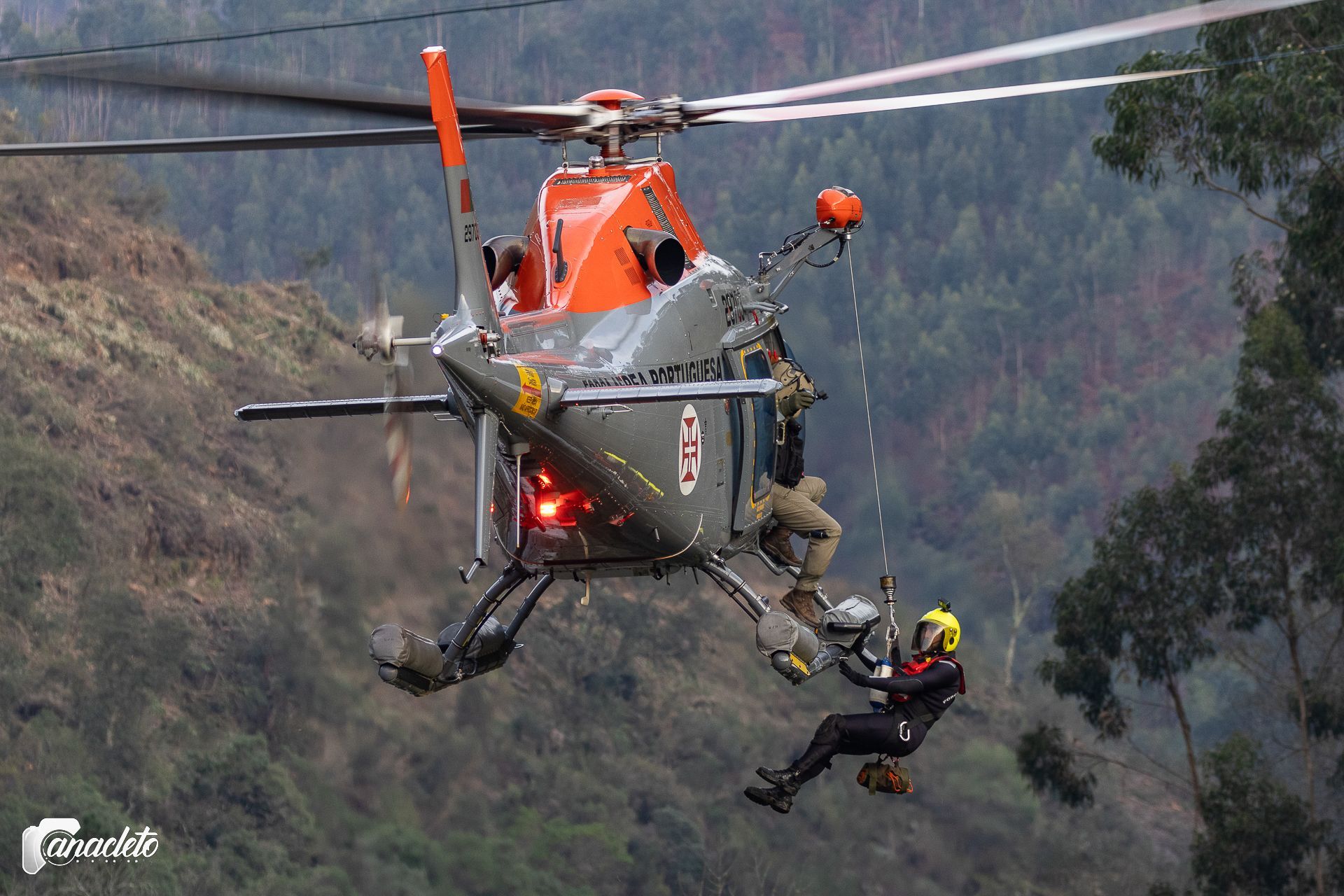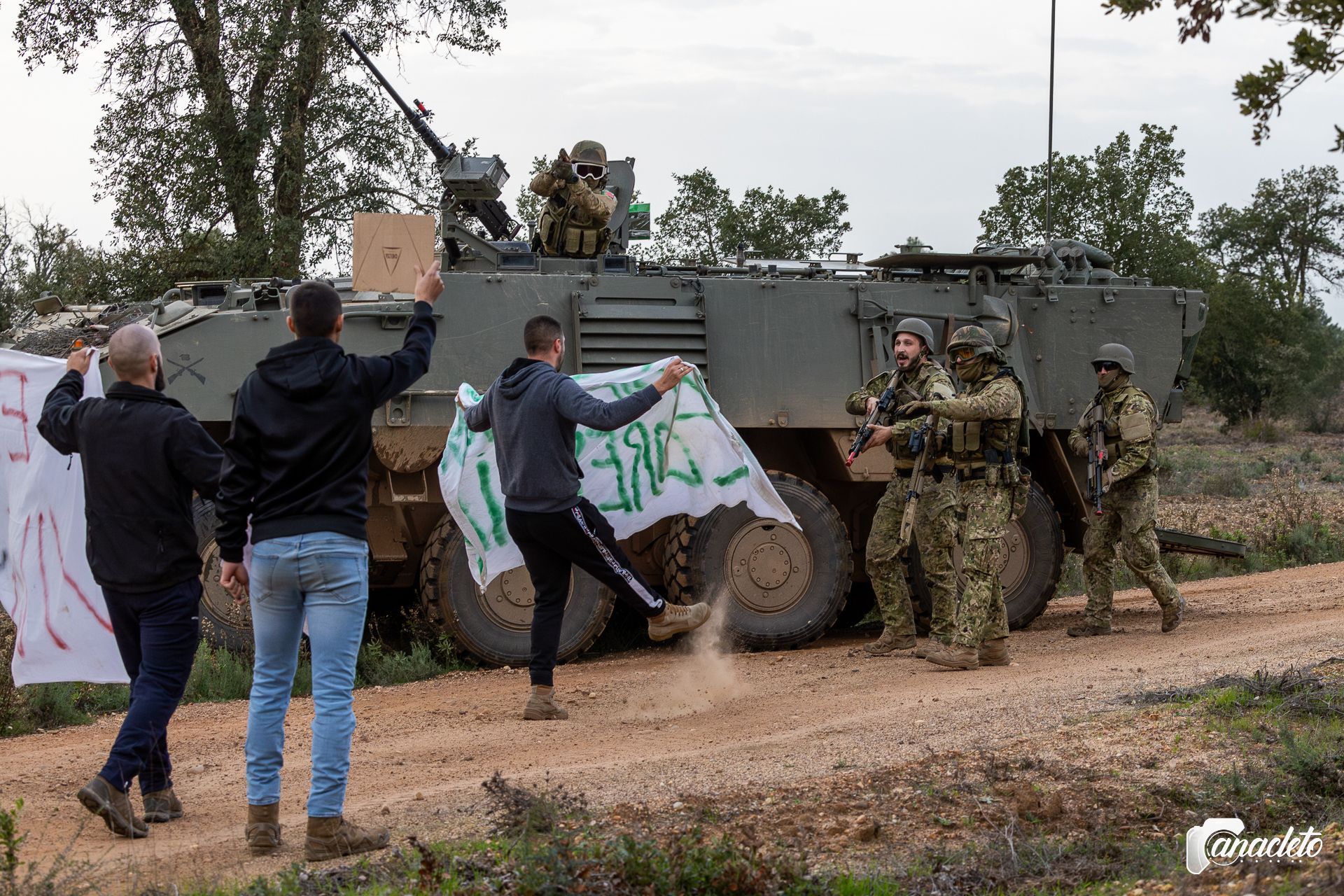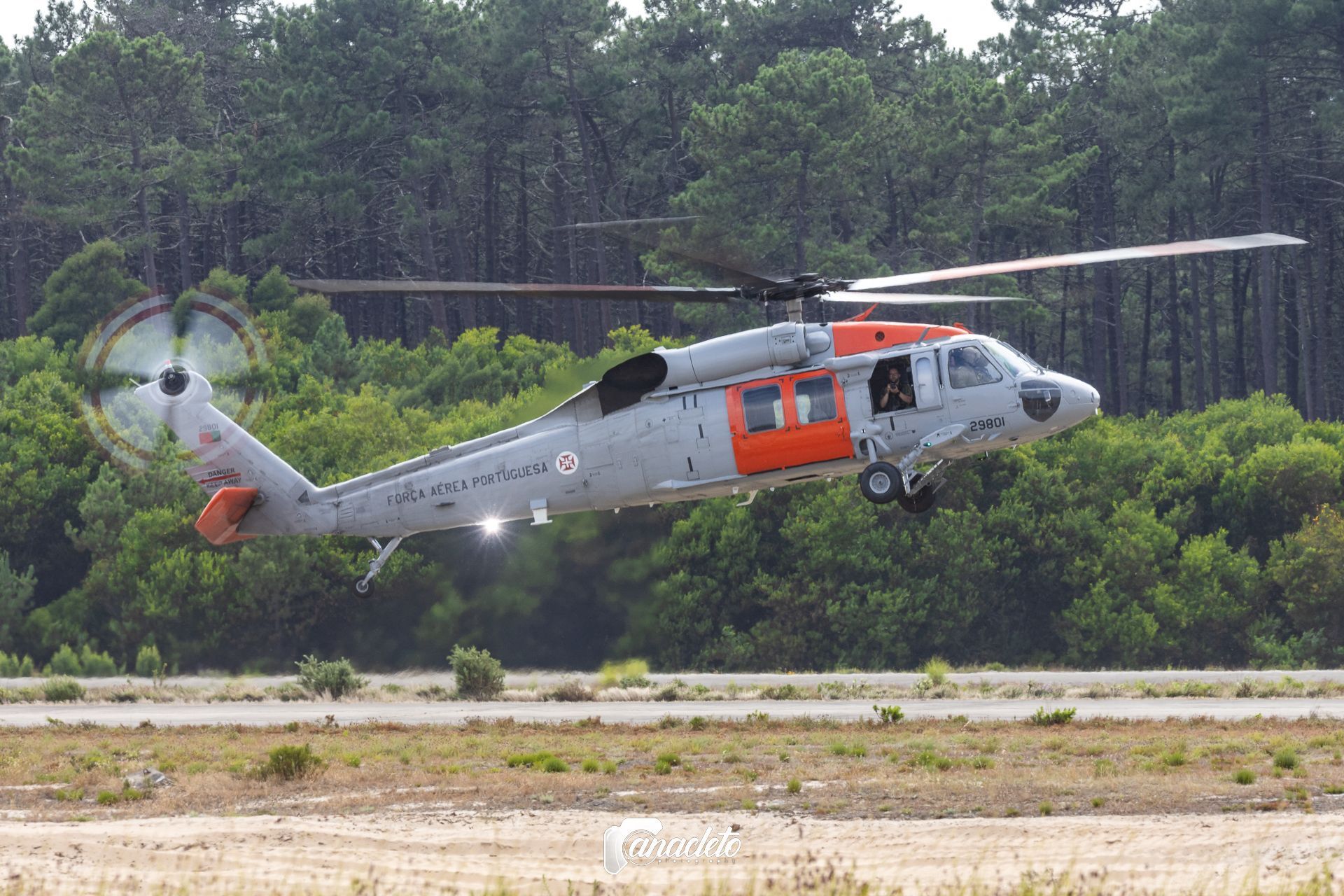Mastering Mountain Rescue: Insights from the 'Heli Resgate em Montanha' Seminar at Arouca Rafting Summit
The growing popularity of nature sports in the extensive Arouca GeoPark region has generated a significant increase in both reputation and financial gain, especially for the companies operating in the area. But there is one factor that has also grown in parallel: the risk of accidents. An accident in a remote area that is difficult to access could well jeopardize the victim's survival. That's why, more than ever, it's important to address the issue, share experiences and train teams to carry out this type of rescue, so that the people who play sports there can rest assured.
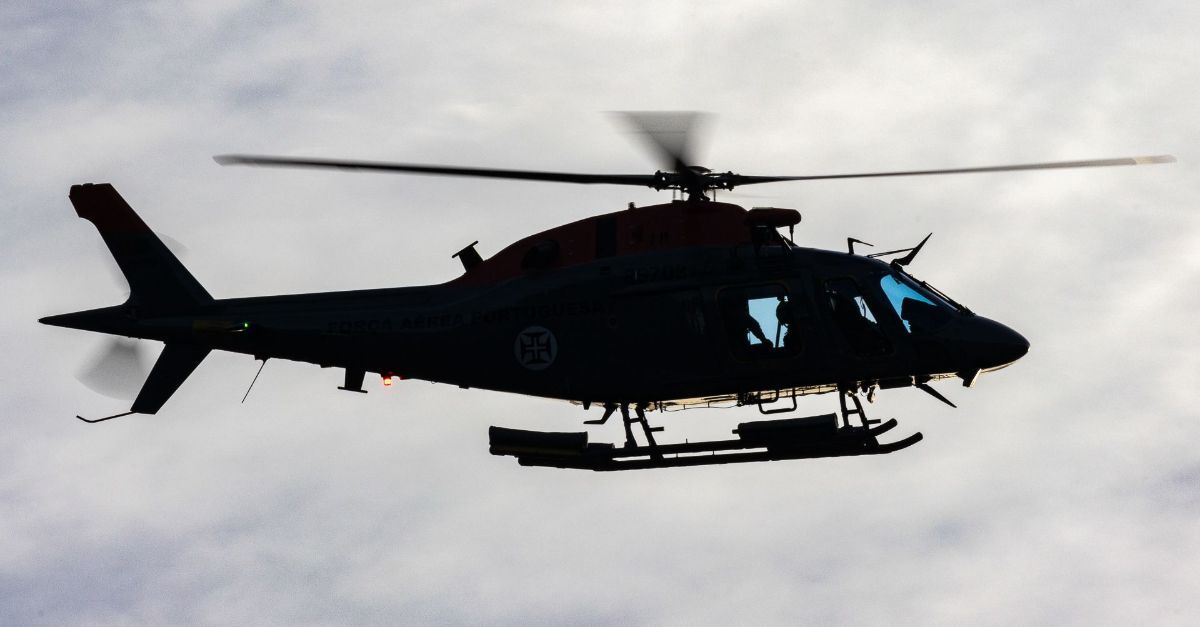
On Friday, January 26th, the "Heli Resgate em Montanha" seminar and exercise took place. It was held in the Auditorium of Alvarenga, and the exercise took place in the village of Espiunca, as part of the "Arouca Rafting Summit" program.
It was attended by more than 150 civil protection agents (firefighters, GNR, municipal civil protection services) and various members of tourist entertainment companies. They came together to share their knowledge and experience of rescue in remote areas with aerial support.
It was led by the Mayor of Arouca, Margarida Belém, the President of the Alvarenga Town Hall, Luís Filipe Teles, and the Regional Emergency and Civil Protection Commander of the Northern Regional Command of the National Emergency and Civil Protection Authority, Army Lieutenant Colonel Carlos Alves. The event was also supported by the Portuguese Air Force, ANEPC – Autoridade Nacional de Emergência e Proteção Civil and the Arouca Volunteer Fire Department.
After the opening session, there was a presentation by Miguel Ângelo Ferreira, Senior Sports Technician at the Municipality of Arouca, who gave an introduction to the various sports practiced at Arouca GeoPark, from water sports such as rafting and canoeing, to mountain biking, climbing and trail running, among others. We noted the rapid growth of these activities and the number of people who attend them throughout the year, and how important it is to have teams prepared to respond when tragedy strikes.
Next up was Sérgio Azevedo, Adjunto de Comando of the Arouca Volunteer Fire Department, who shared his experience as an operative, describing the difficulties that rescue teams encounter when dealing with these cases. The lack or insufficiency of precise communication of the victim's location, access and even communication between the team on the ground and the crew of the helicopter requested to the scene are all aspects that compromise the speed of rescue and that need to be improved in order to guarantee the safeguarding of life.
After a short coffee break, it was the turn of António Barbosa, a doctor from INEM - Instituto Nacional de Emergência Médica (National Institute of Medical Emergency), to give a brief introduction to the structure and management of emergency calls from the 112 network, as well as some information on the process of assigning resources to the reported emergency and the activation of Portuguese Air Force aircraft, if necessary.
Albano Teixeira, Sub-Regional Emergency and Civil Protection Commander for the Porto Metropolitan Area, was also on stage to give an insight into the whole process, from the initial alert, through the request for SAR (Search and Rescue) equipment, to the link between the National Emergency and Civil Protection Command and the General Staff of the Armed Forces, which coordinates with the Air Force Air Command to provide and activate the aircraft necessary.
Finally, the Portuguese Air Force was present with a crew of three from the 552 Squadron - "Zangões", namely the pilot Captain João do Amaral Prata, the rescue swimmer First Sergeant Jorge Correia and the winch operator Sargento-Ajudante Rui Elias. During this presentation, a comprehensive overview was given of the capabilities and operations of the Leonardo AW 119 Koala helicopter, highlighting both its main characteristics and the critical missions in which it is employed. The presentation also included an analysis of the main equipment used by the retriever for the safe transportation of victims, as well as the various techniques employed by the crews to ensure effective operations. Essential procedures and precautions were also shared during all phases of air operations, from working in stationary flight at low altitude, with an emphasis on the challenges caused by downwash, to the take-off and landing processes in varied terrain.
In the afternoon, the exercise took place on the River Paiva, where the participants were confronted with an accident involving a raft that capsized, resulting in one injured person.
After collecting the injured person to the shore, the colleagues carried out first aid and called 112 for assistance. When the emergency teams arrived, they found the victim in a difficult-to-reach place, which would complicate his extraction. After assessing the victim's clinical condition and immobilizing him, the operations commander requested aerial support, which led to the activation of the Portuguese Air Force, which quickly deployed the AW119 Koala to the scene of the accident. With the visual signal provided by a smoke flare, the aircraft approached the site and the rescue swimmer was lowered to the teams on the ground. The victim was carefully placed in a rescue bag and lifted into the helicopter, after which he was transferred to an ambulance belonging to the Arouca Volunteer Fire Department, with the support of INEM. This drill demonstrated the importance of effective coordination between ground and air teams to ensure safe rescue in challenging environments.
See more photos here:
